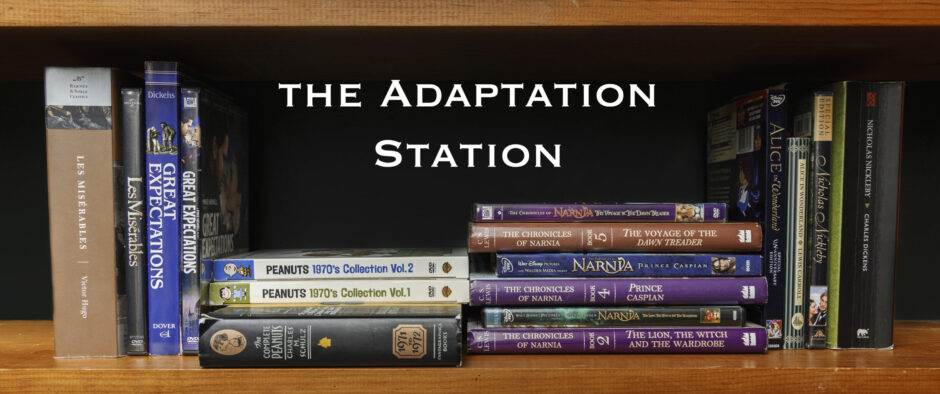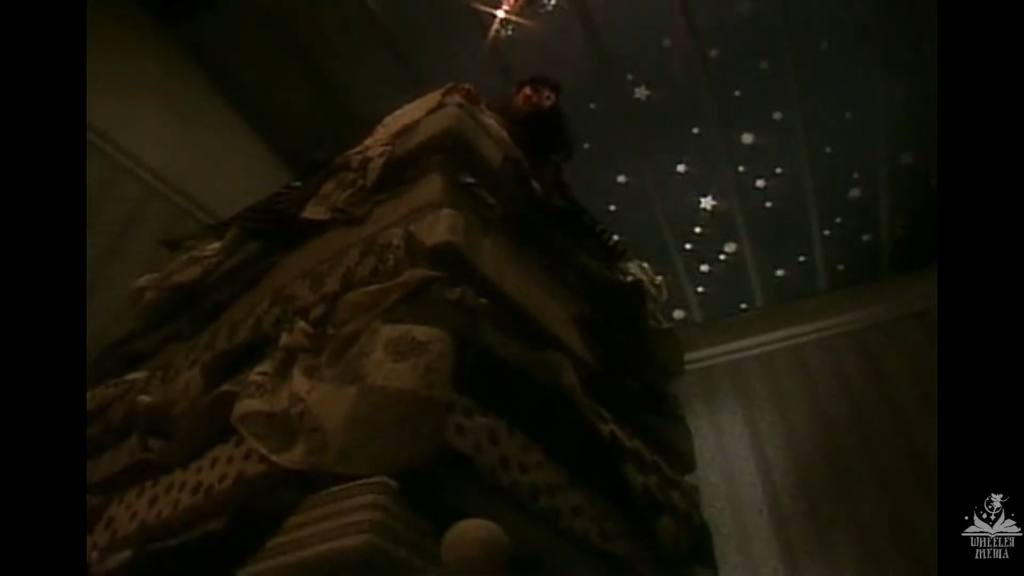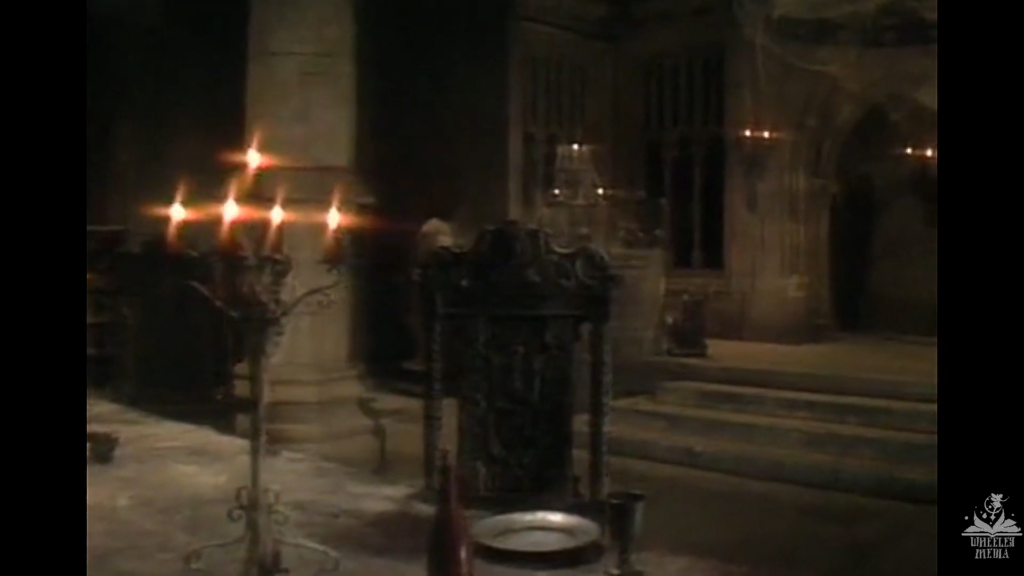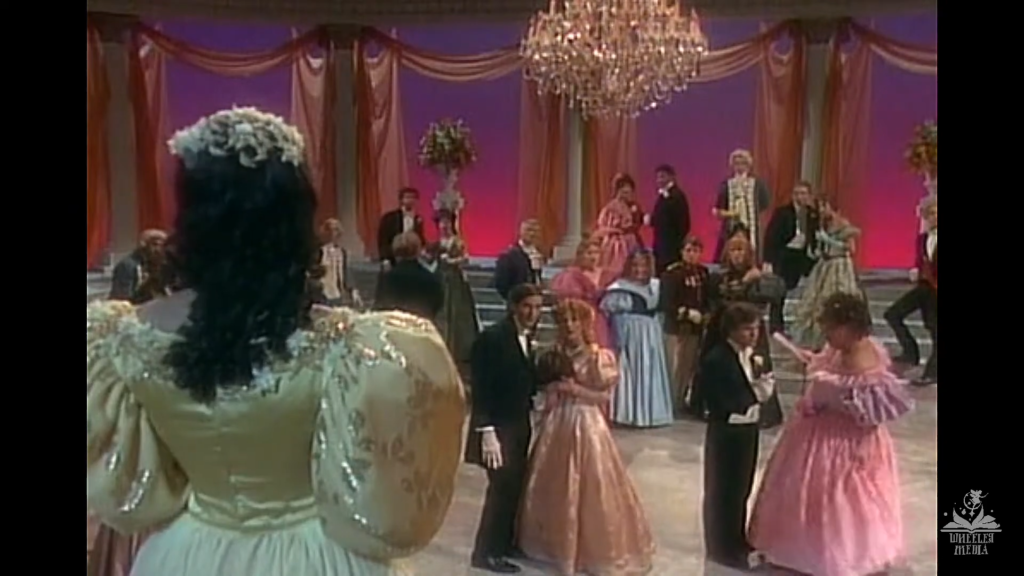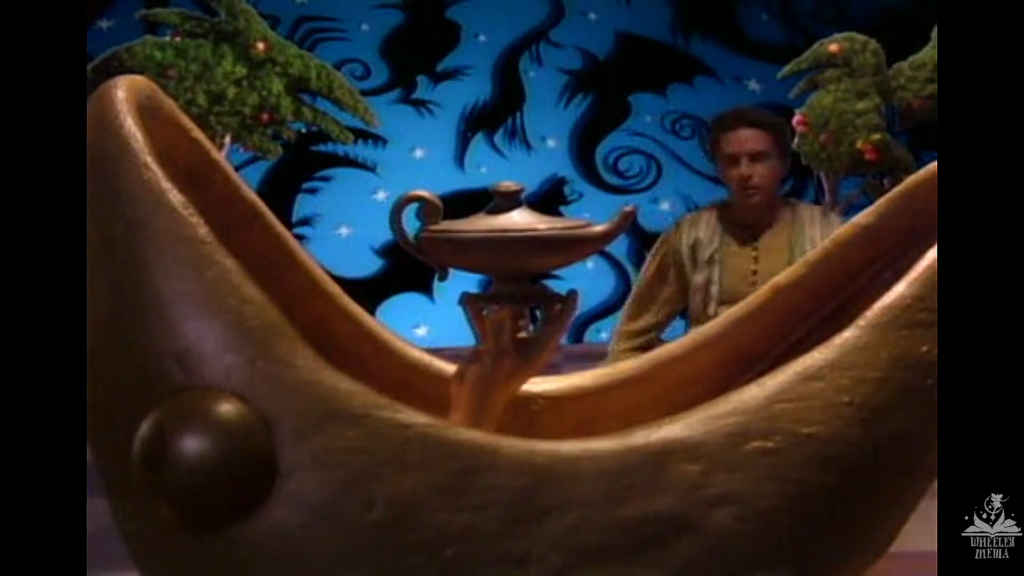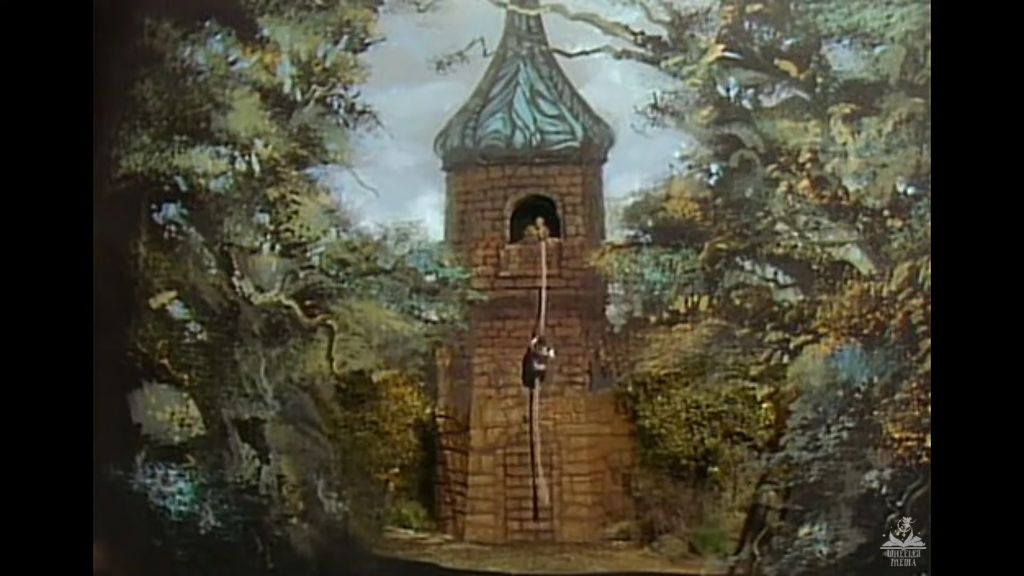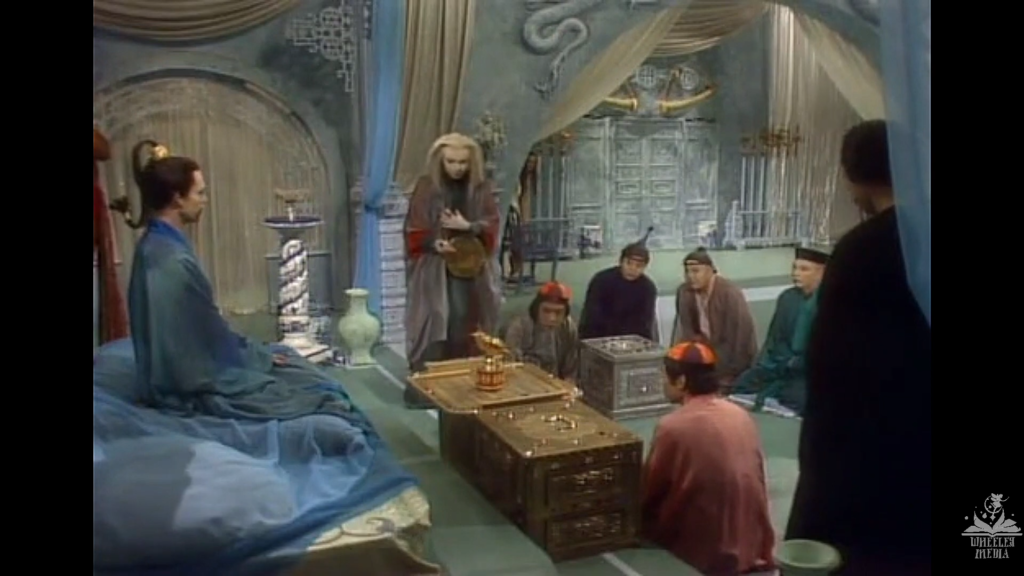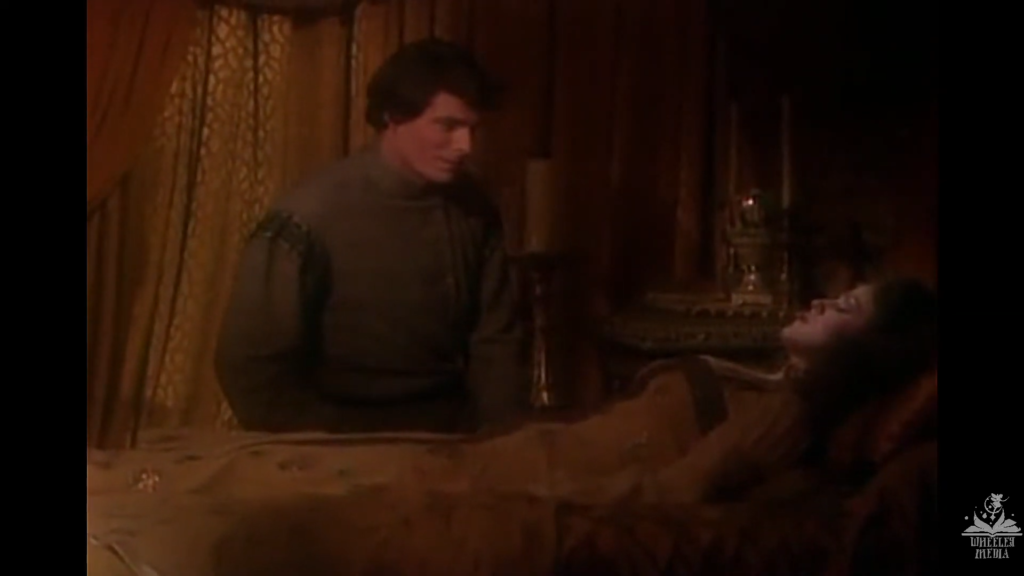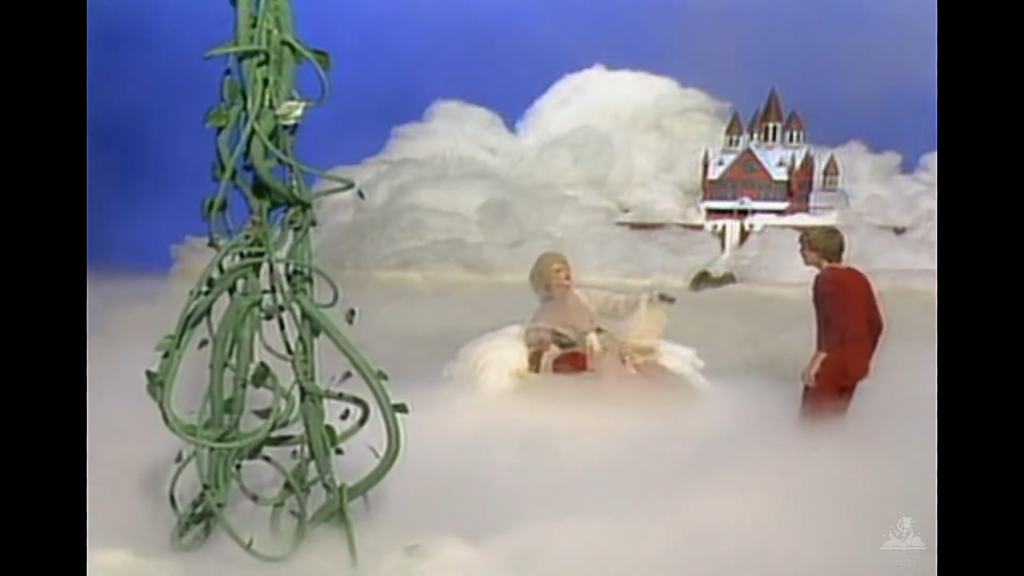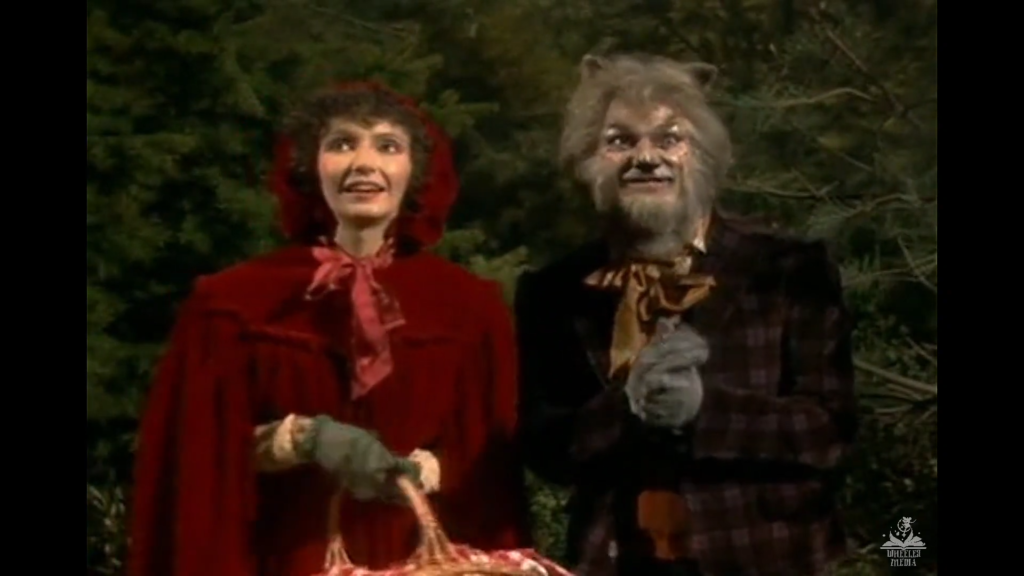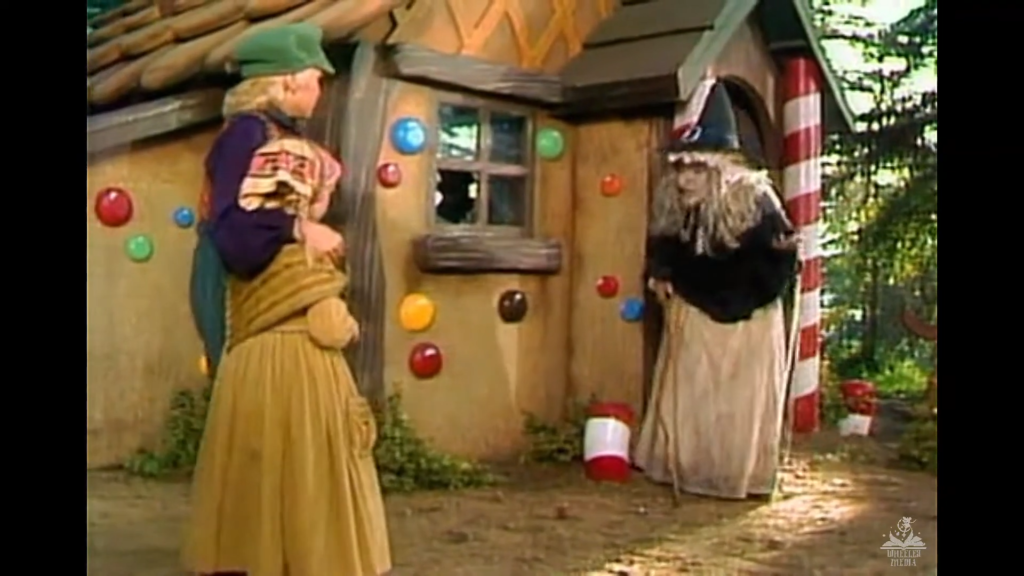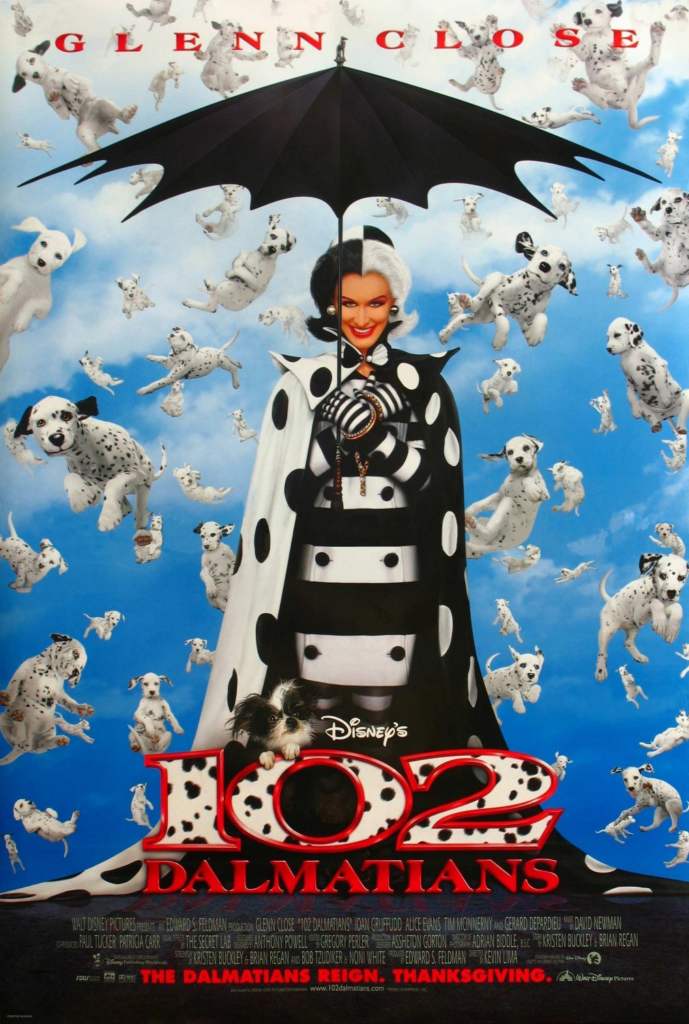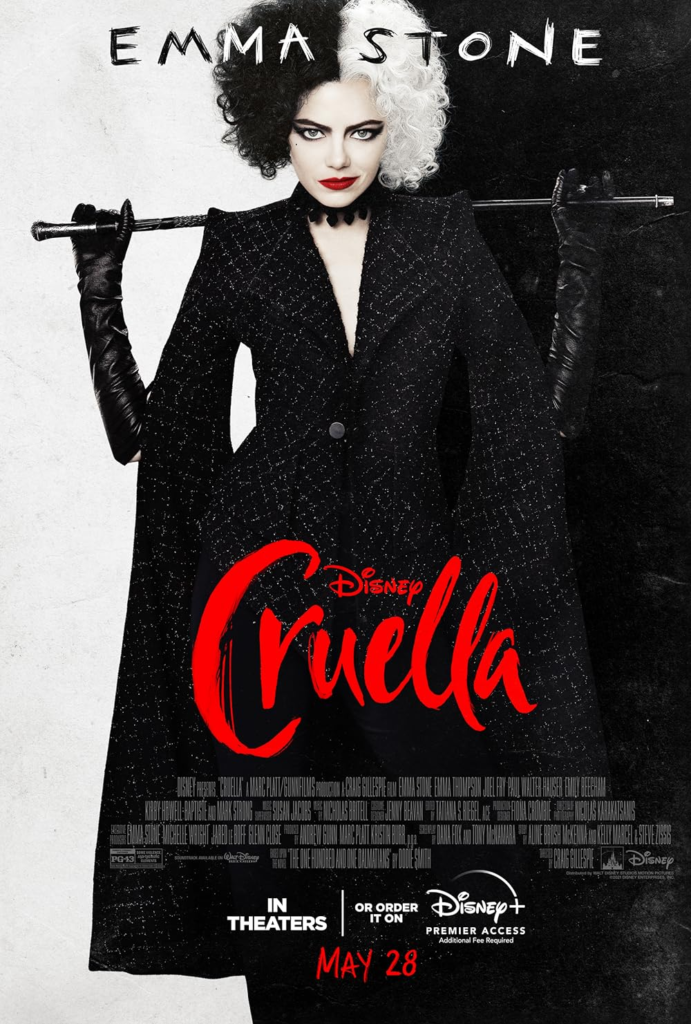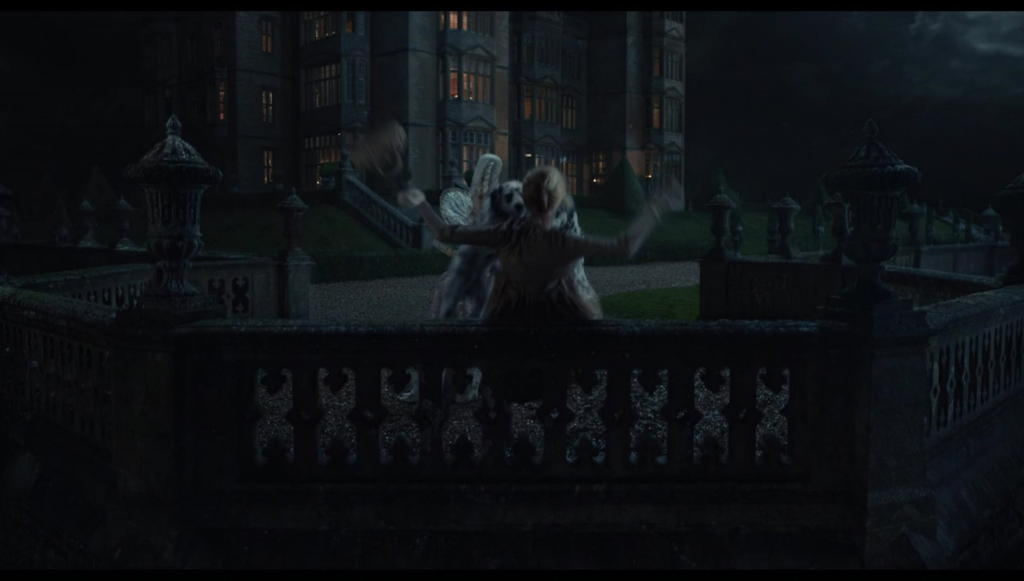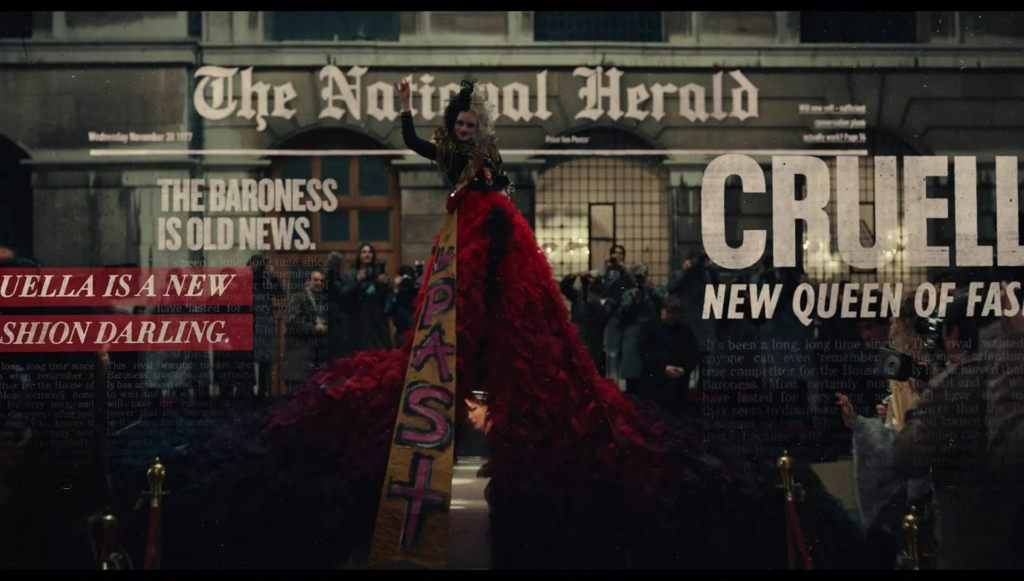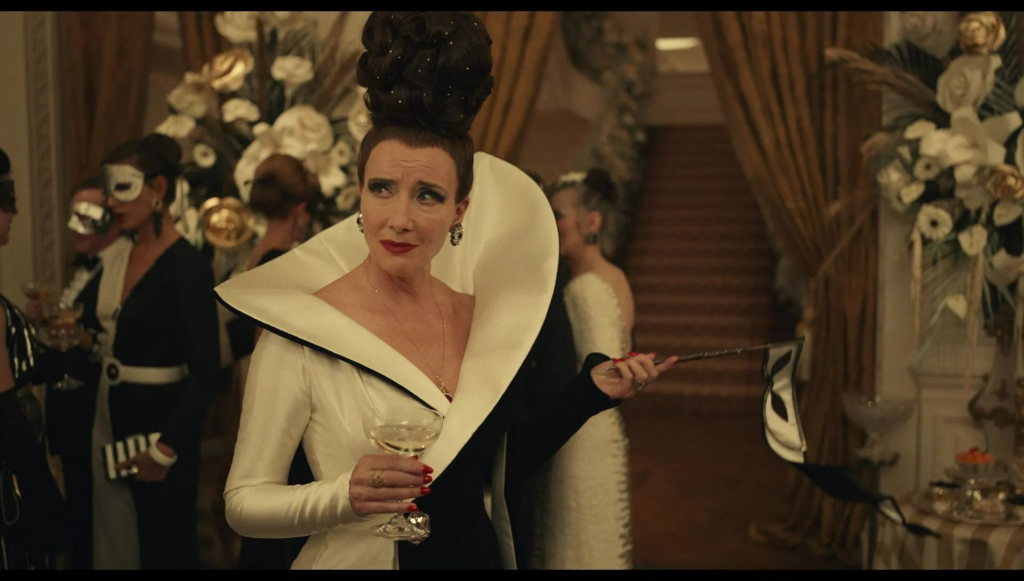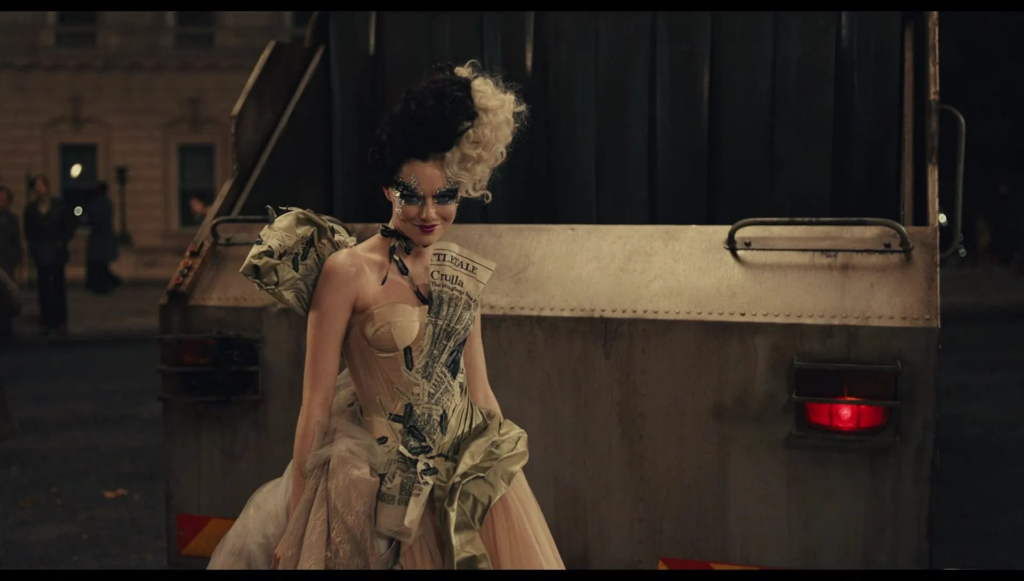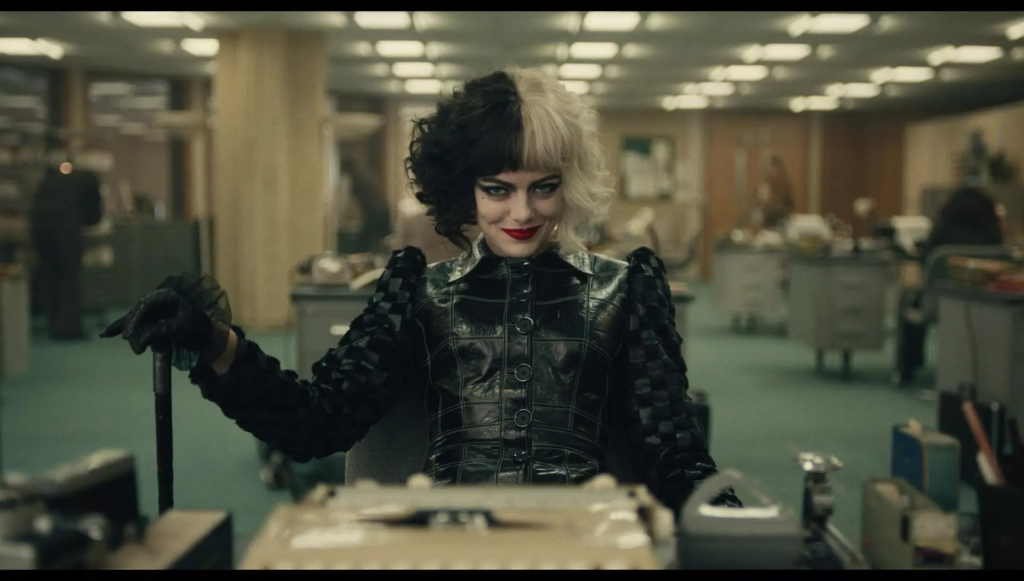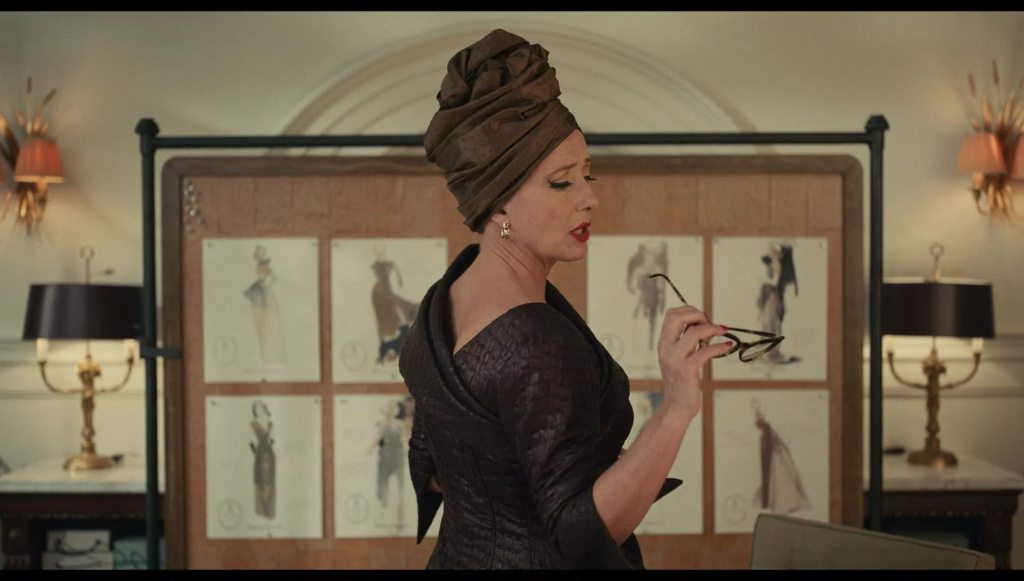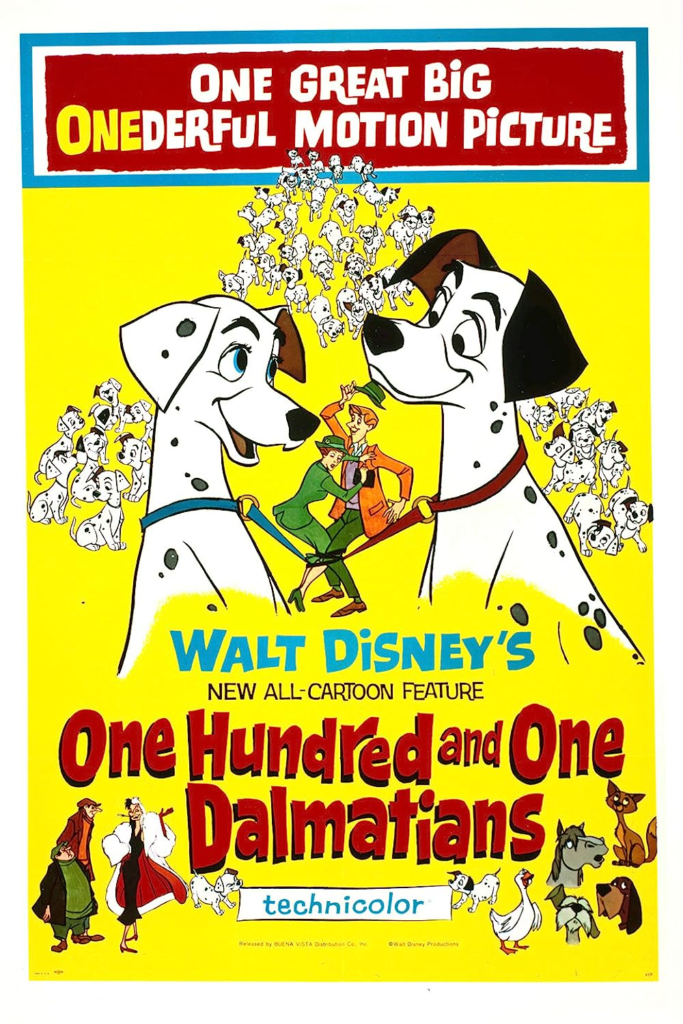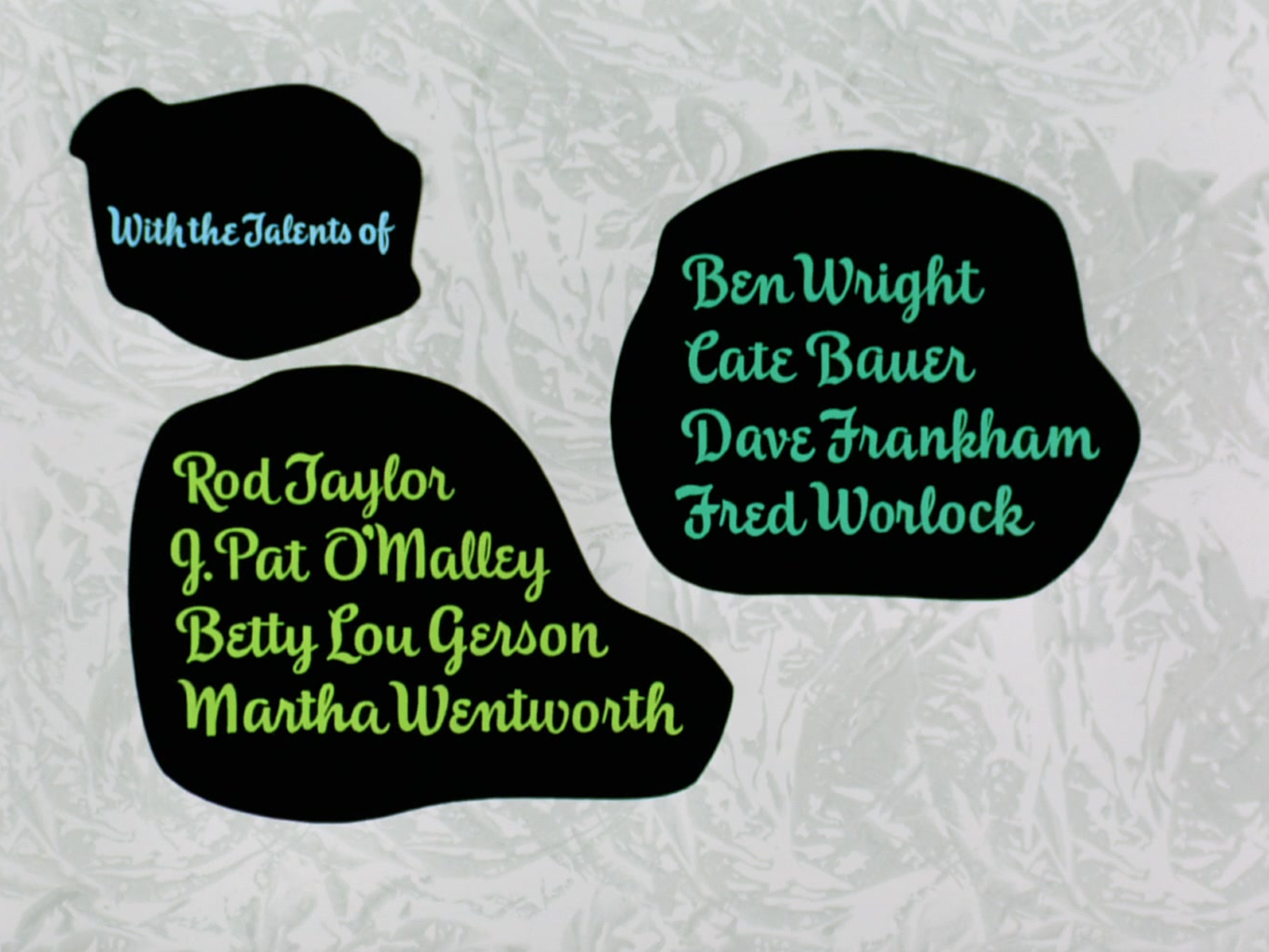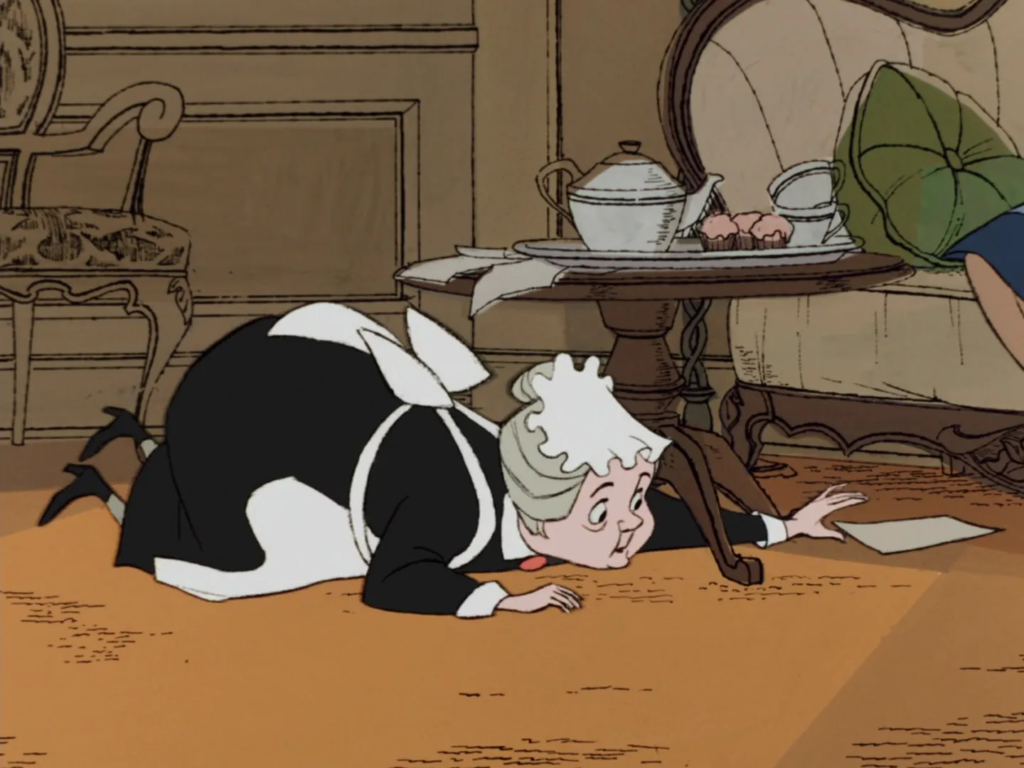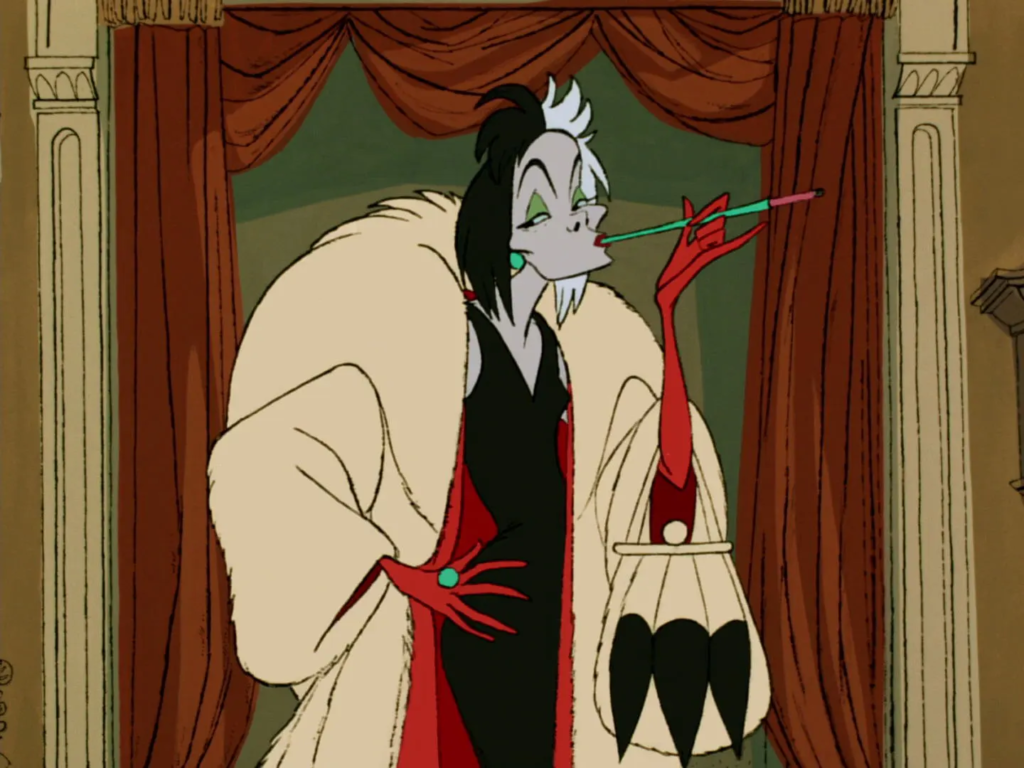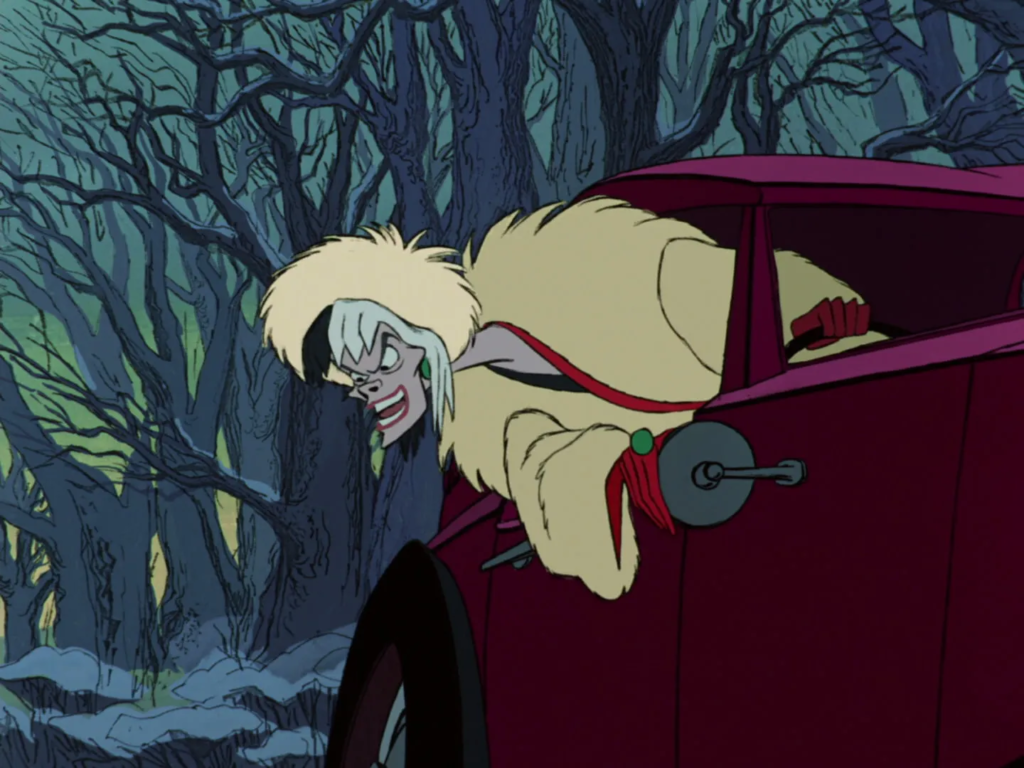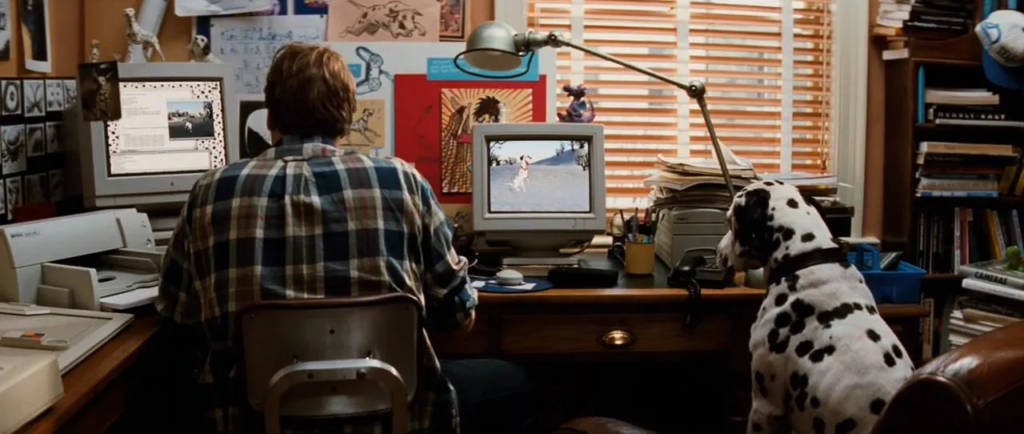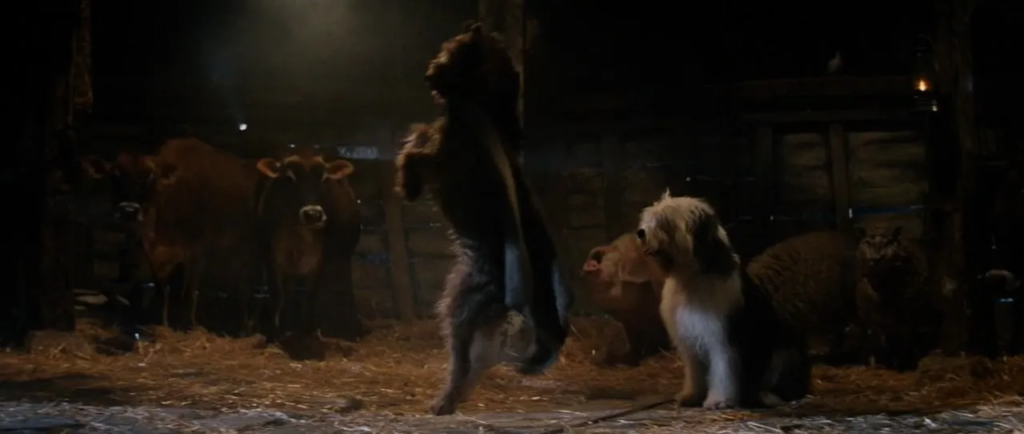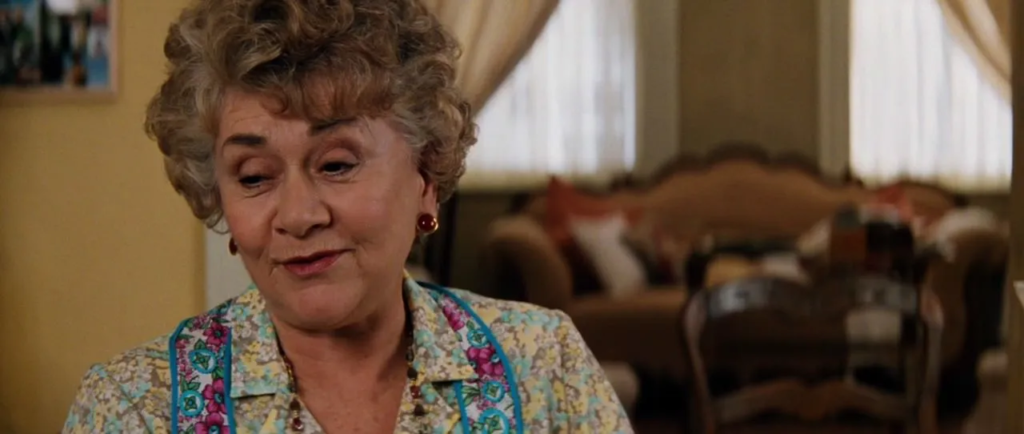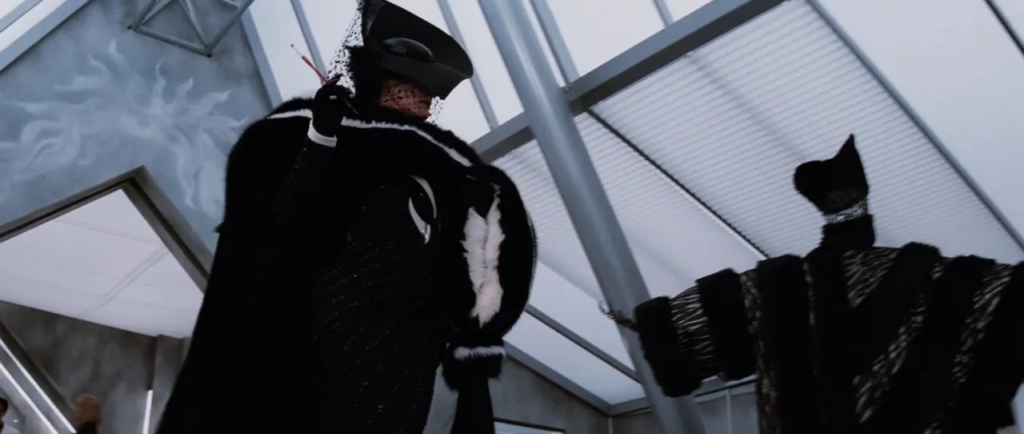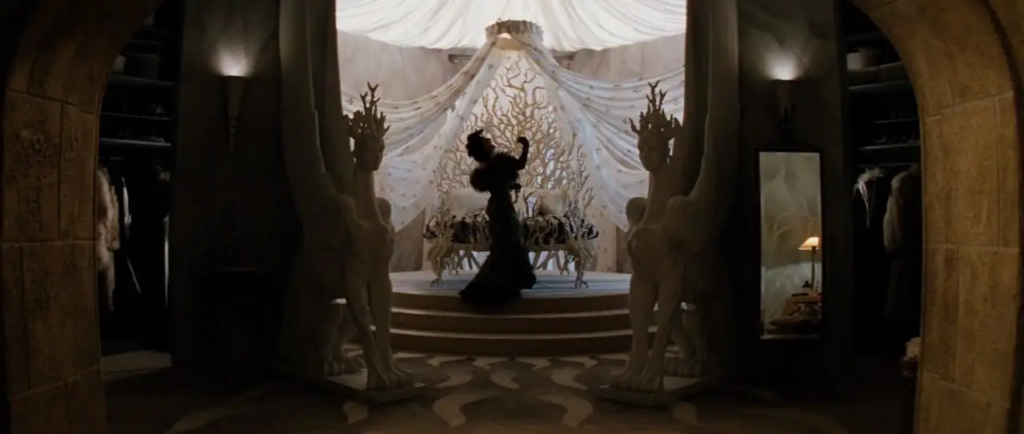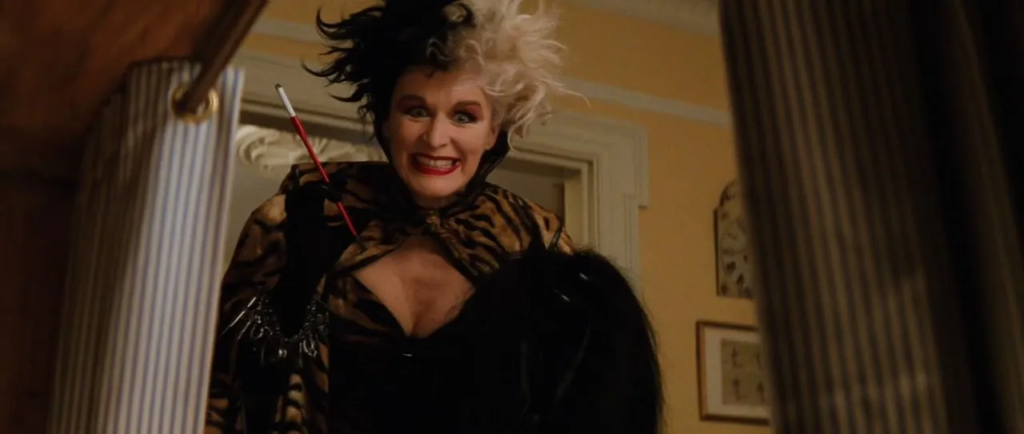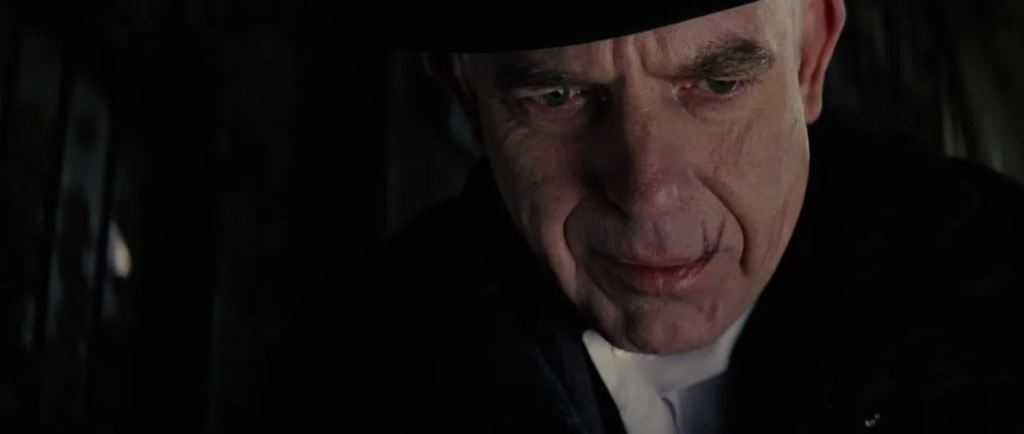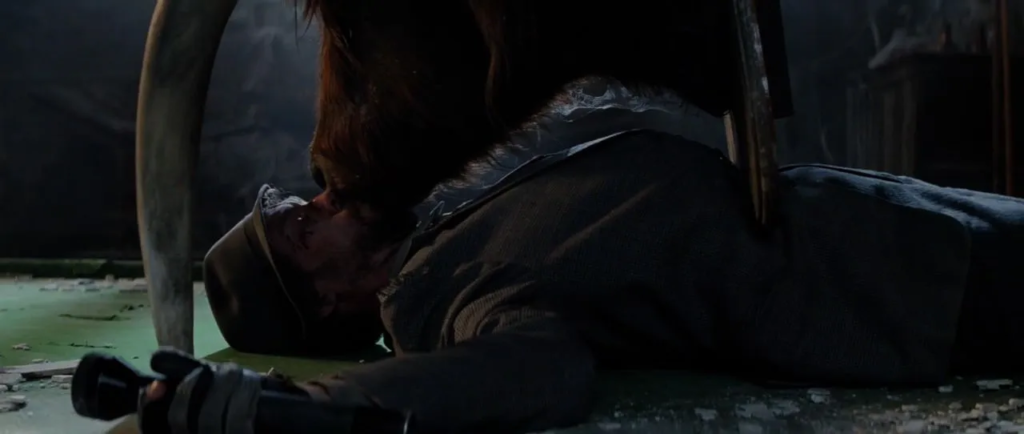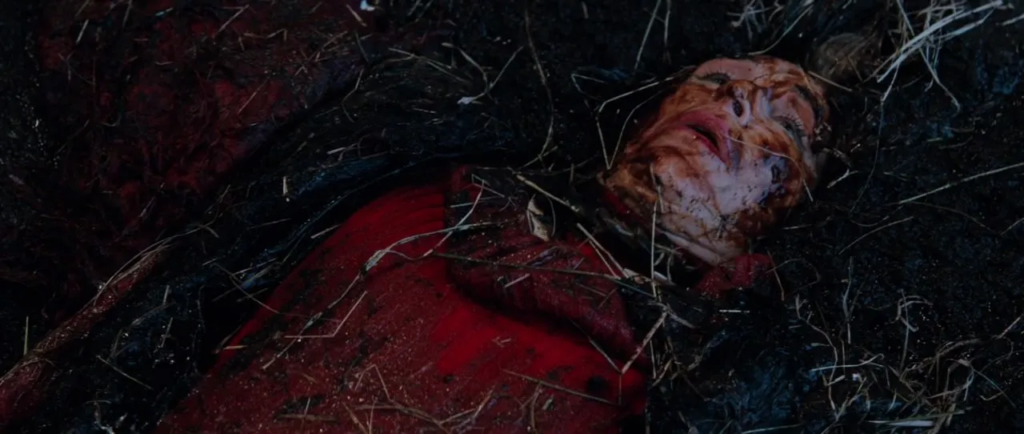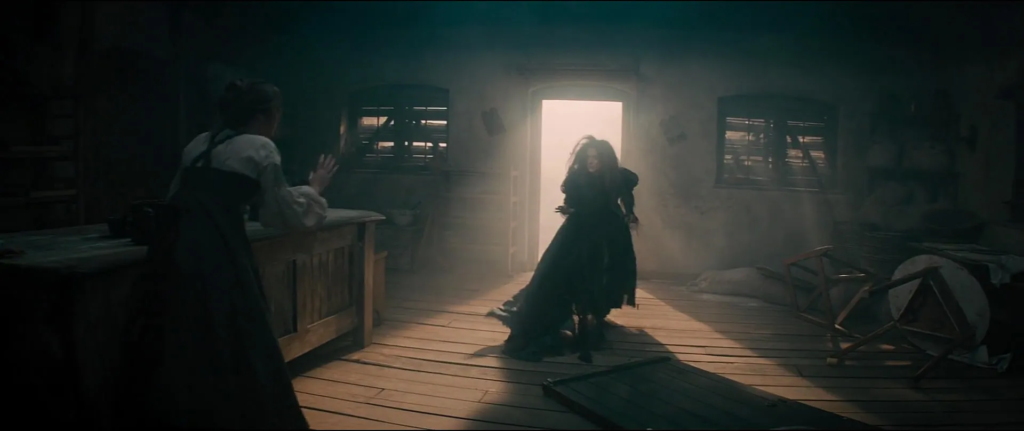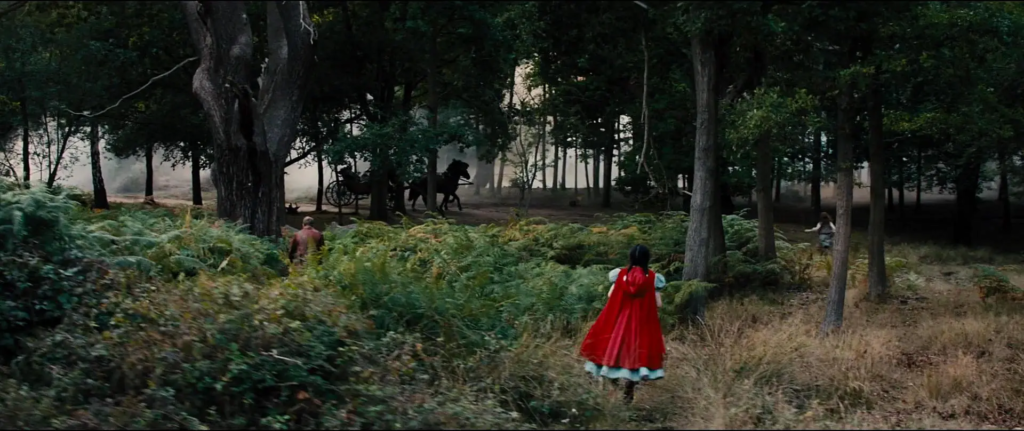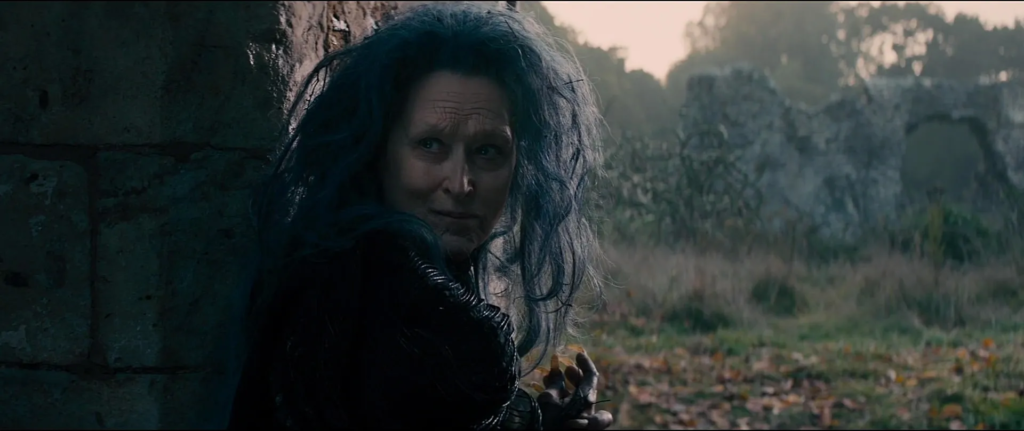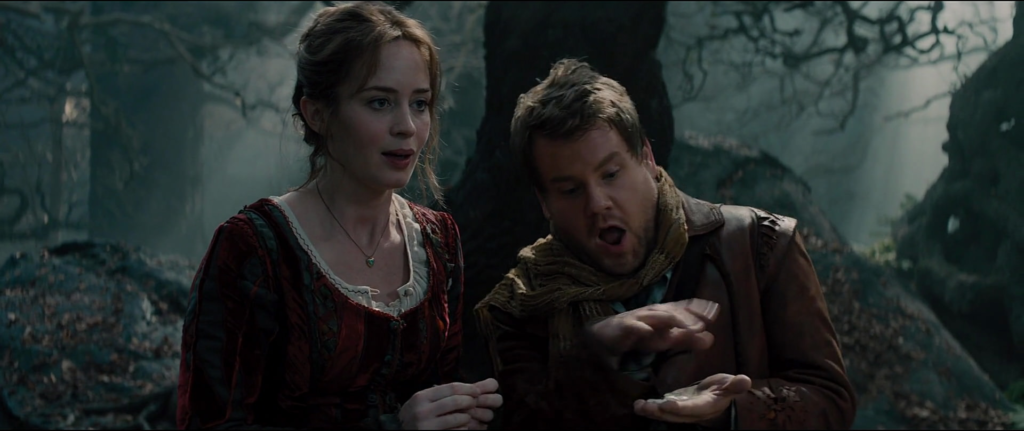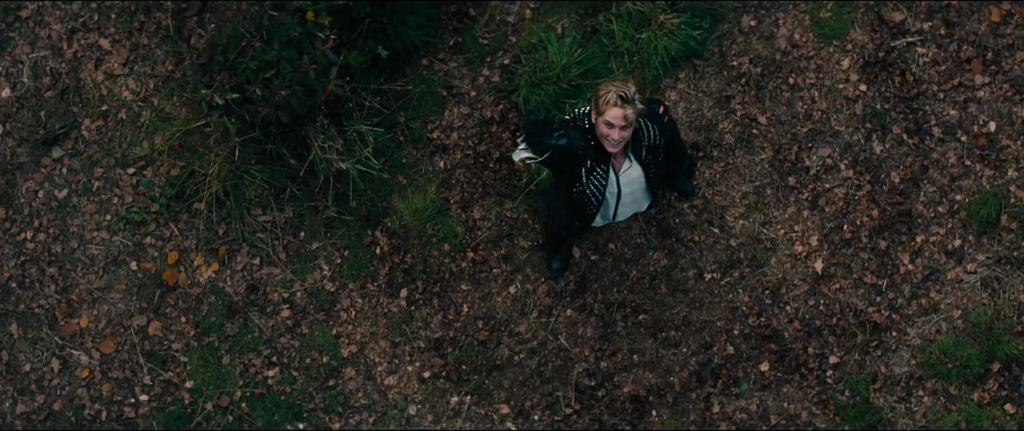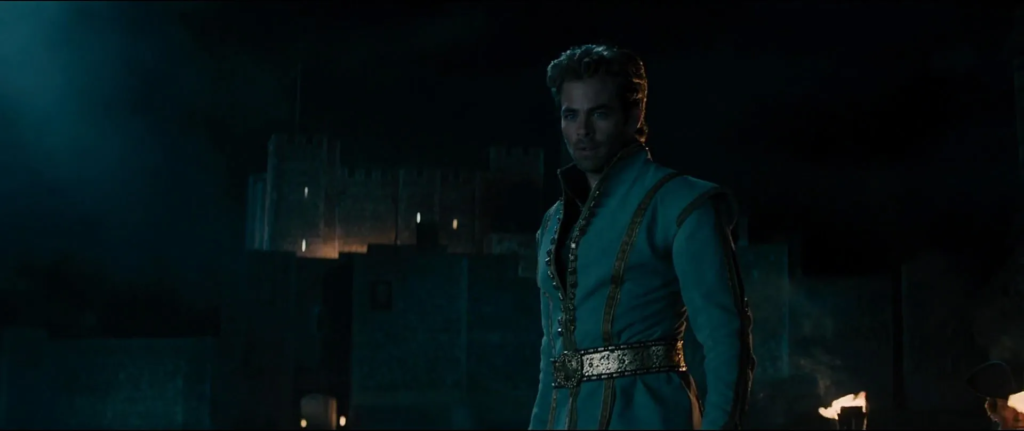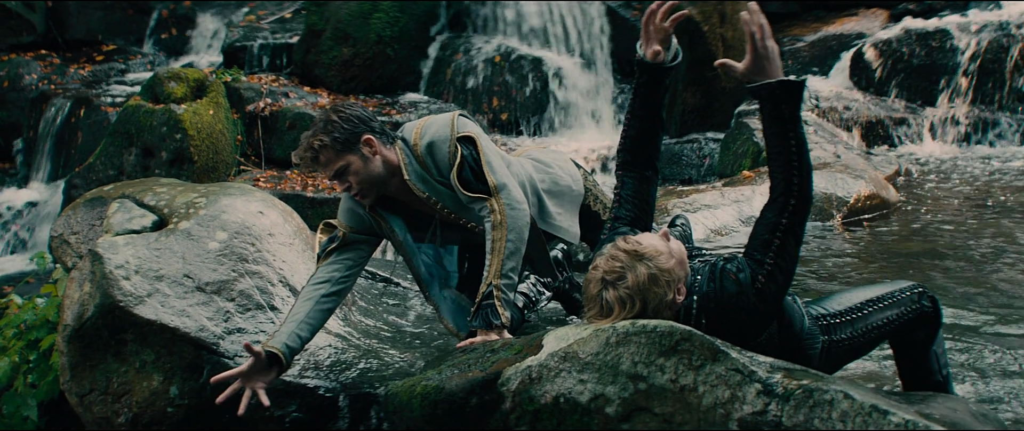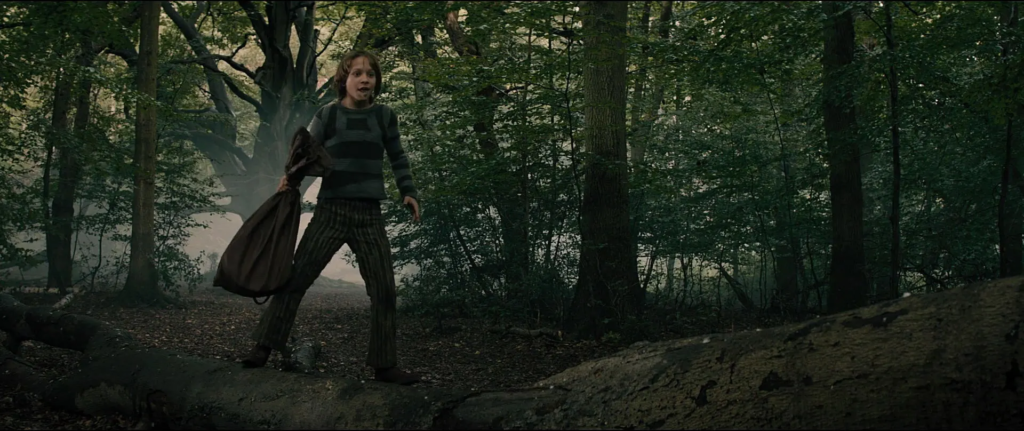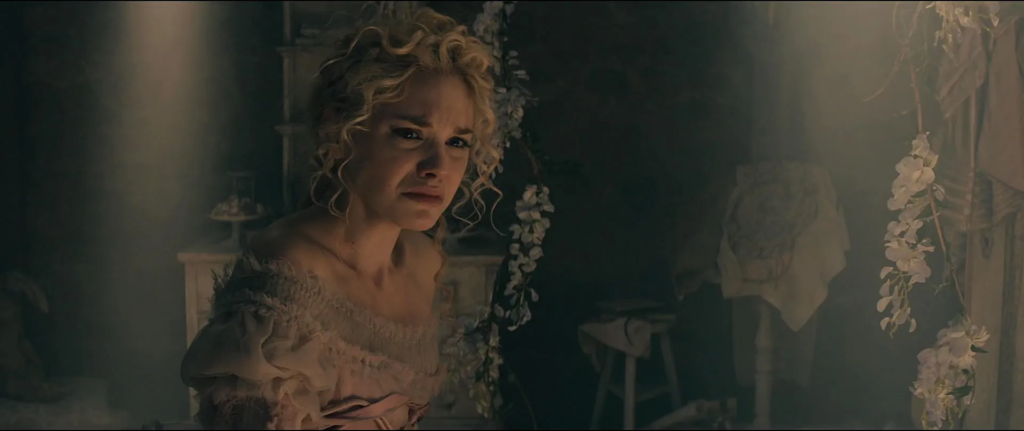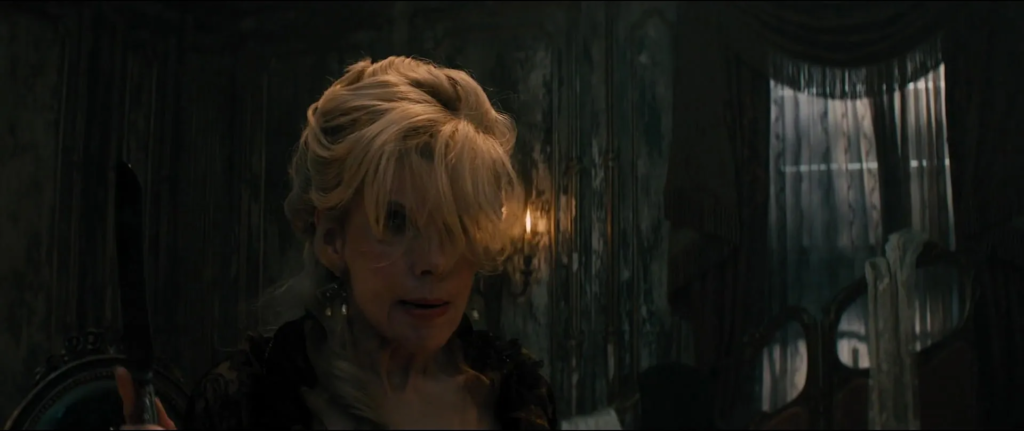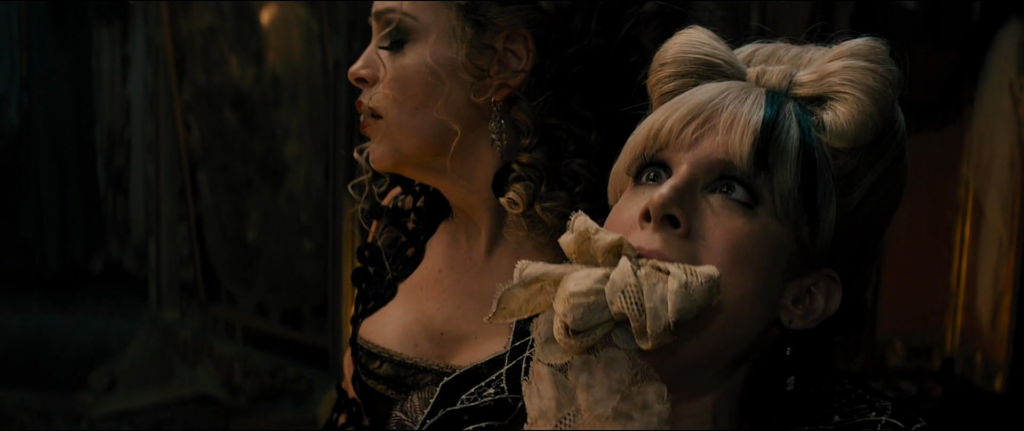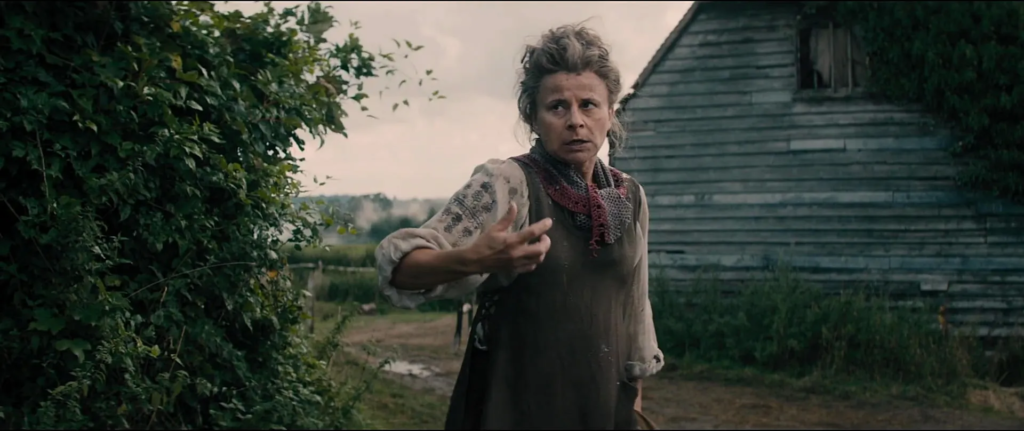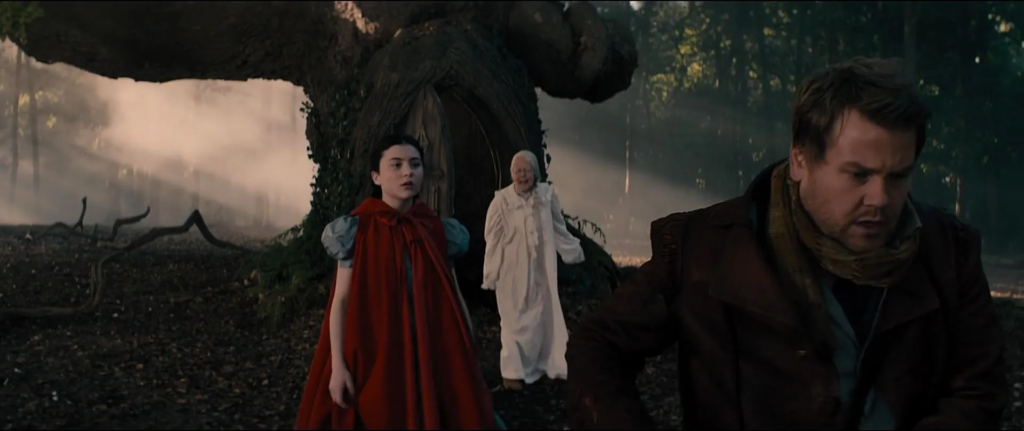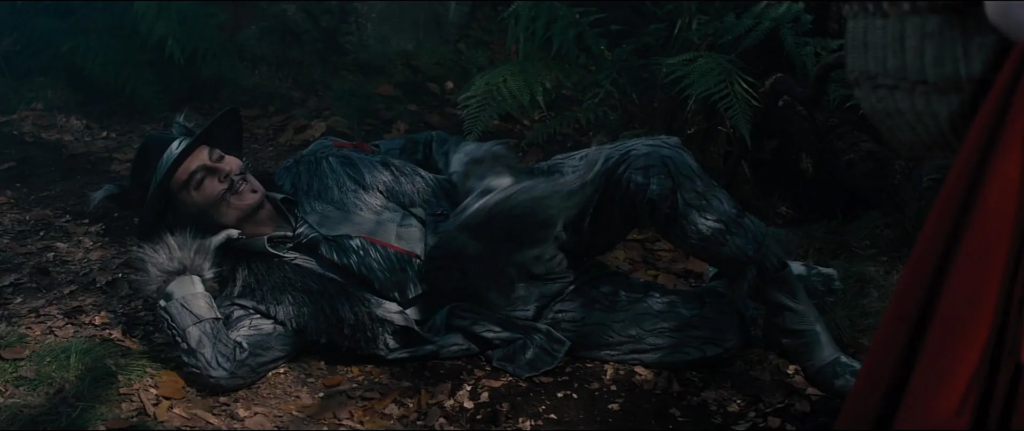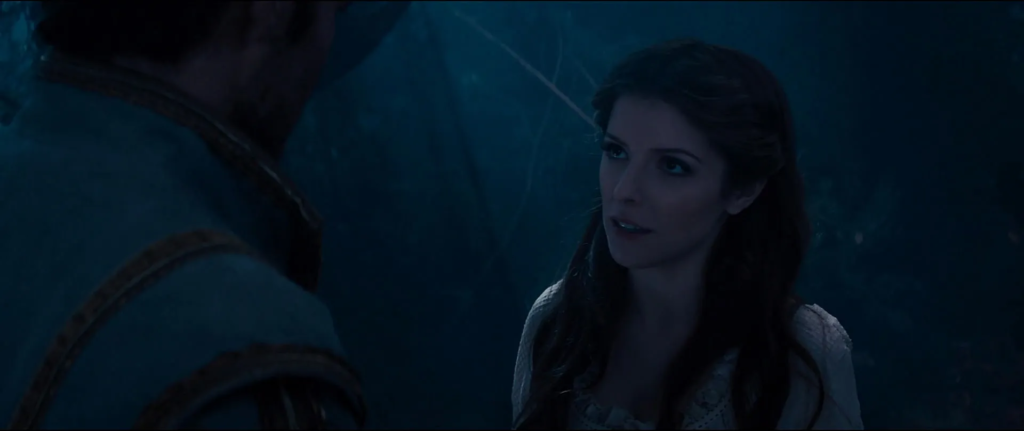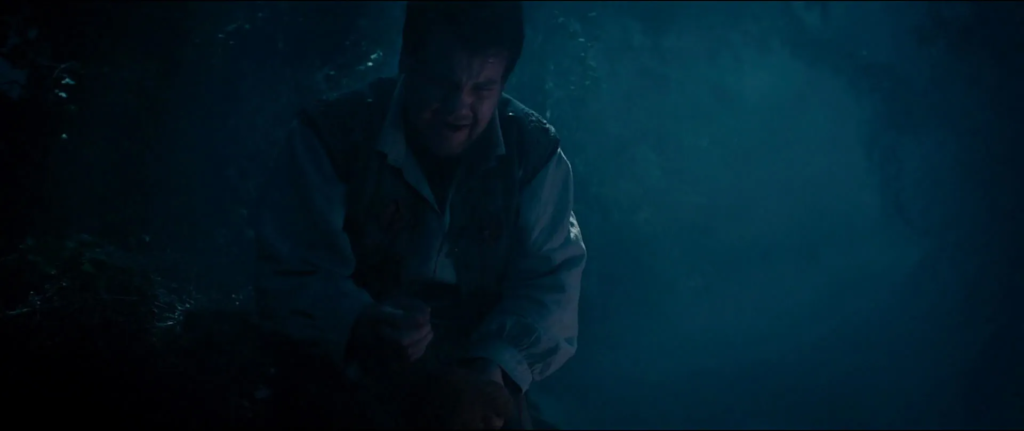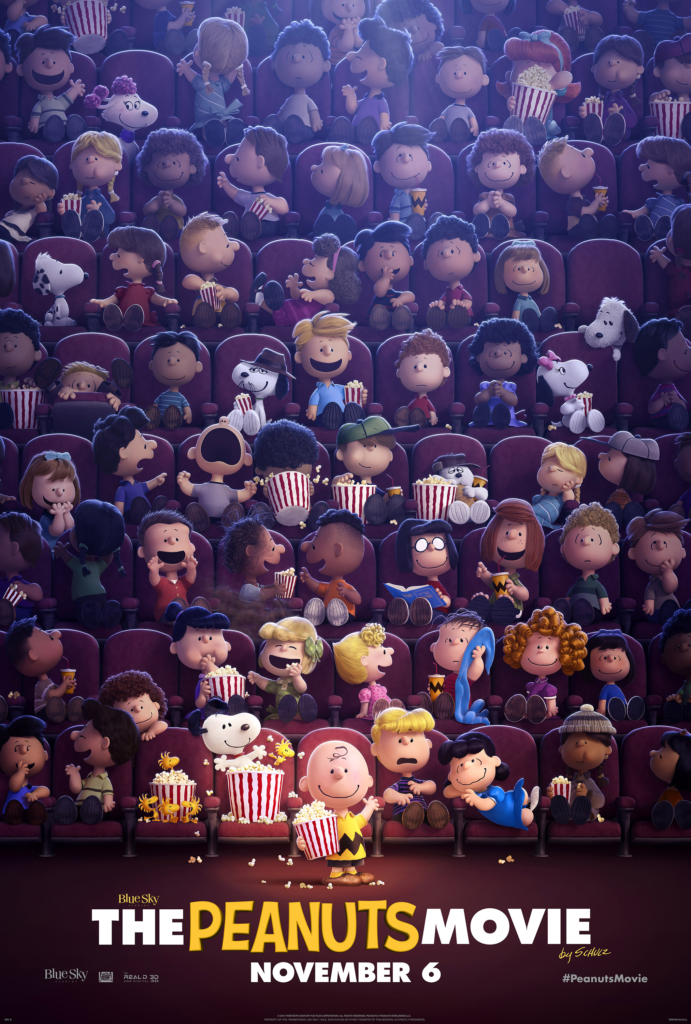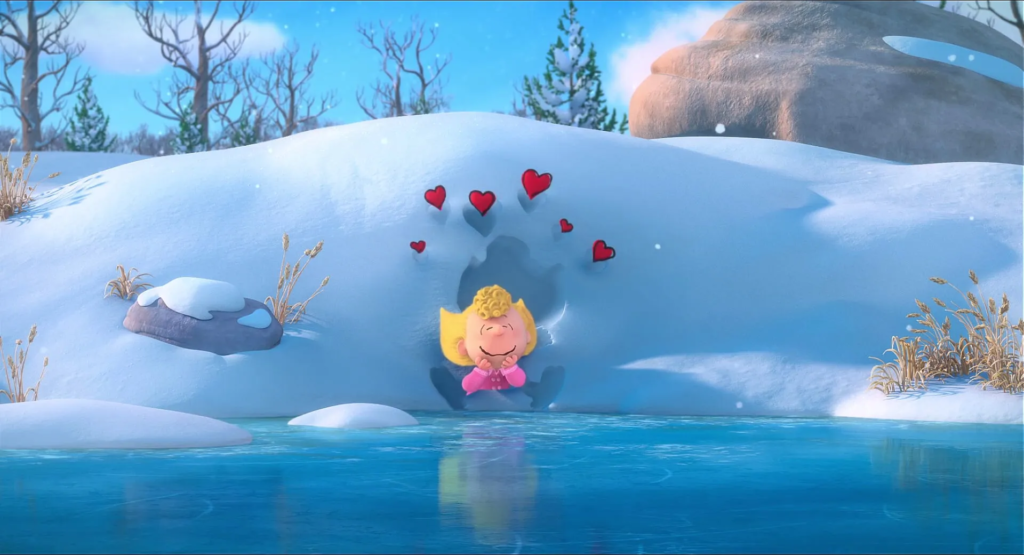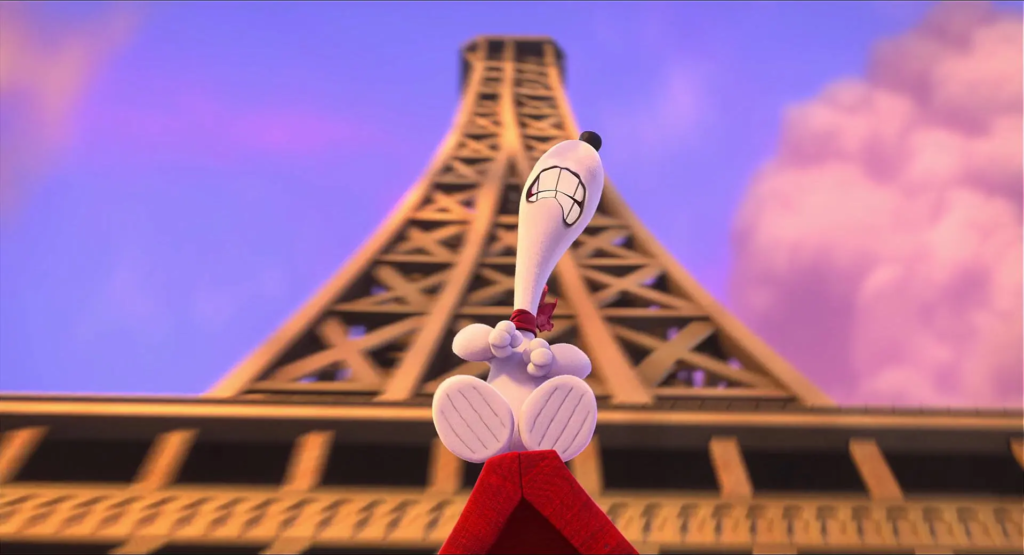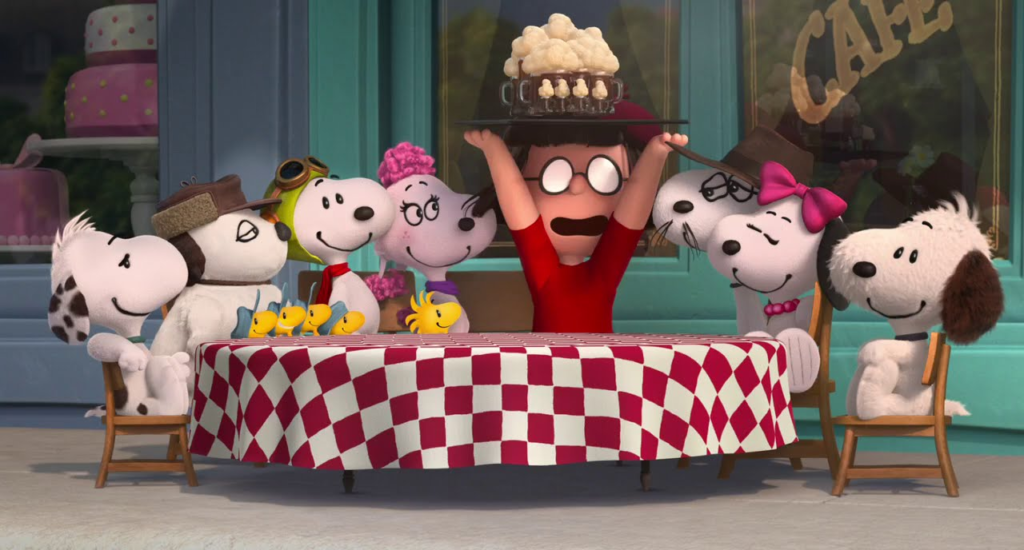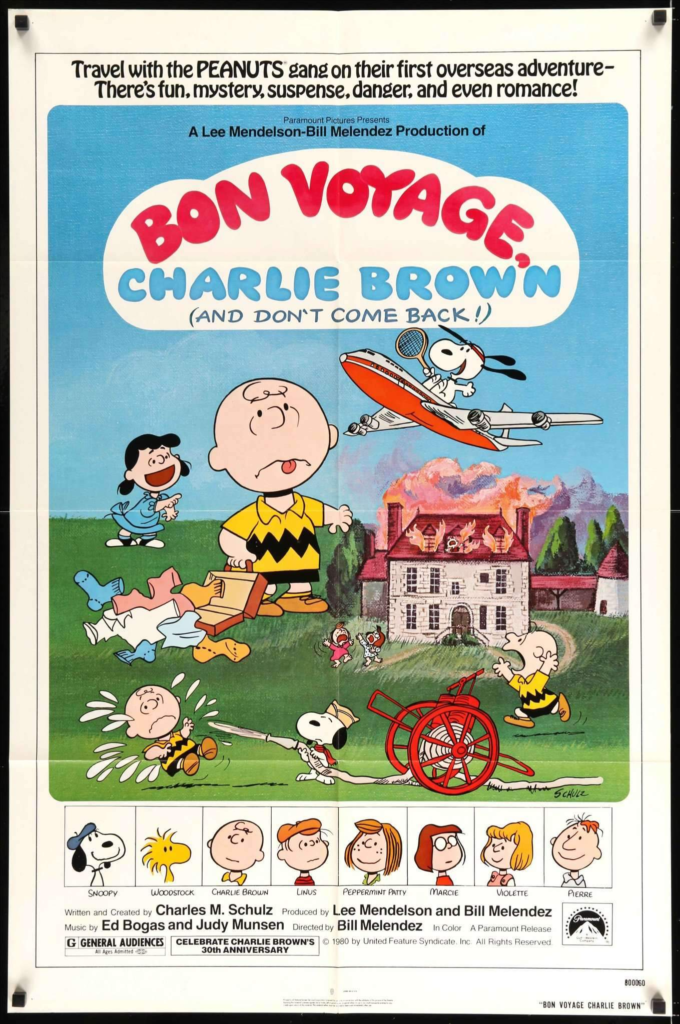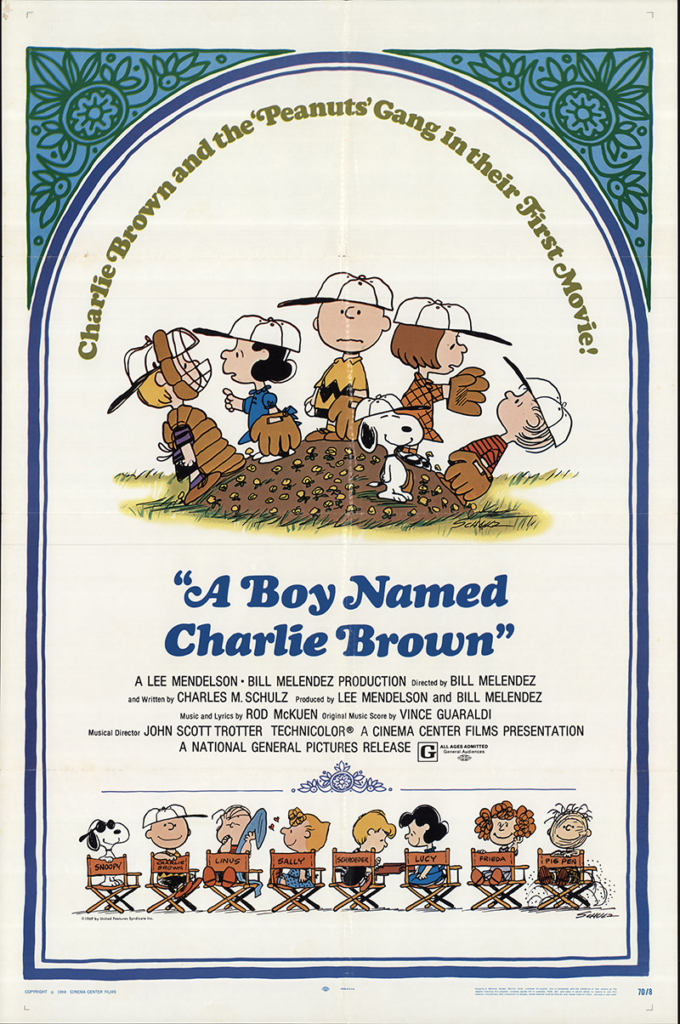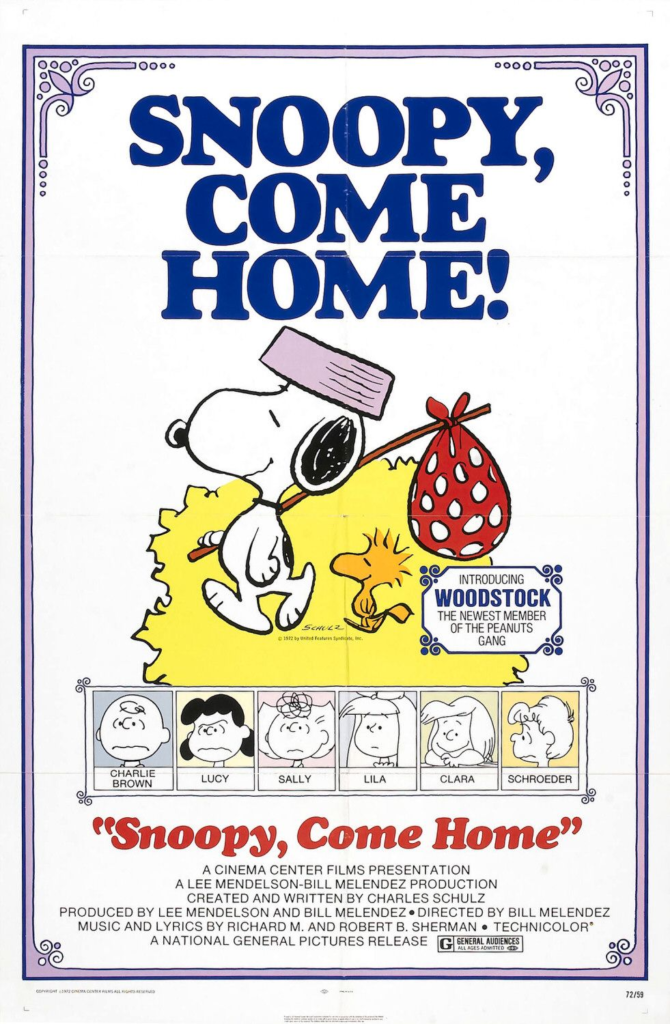My last two posts were about what I consider the best episodes of Shelley Duvall’s Faerie Tale Theatre. This post is about ones that maybe could have been the best, or at least among the most interesting, but are held back by one thing or another. These are naturally the most fascinating and frustrating episodes to watch.
Snow White and the Seven Dwarfs
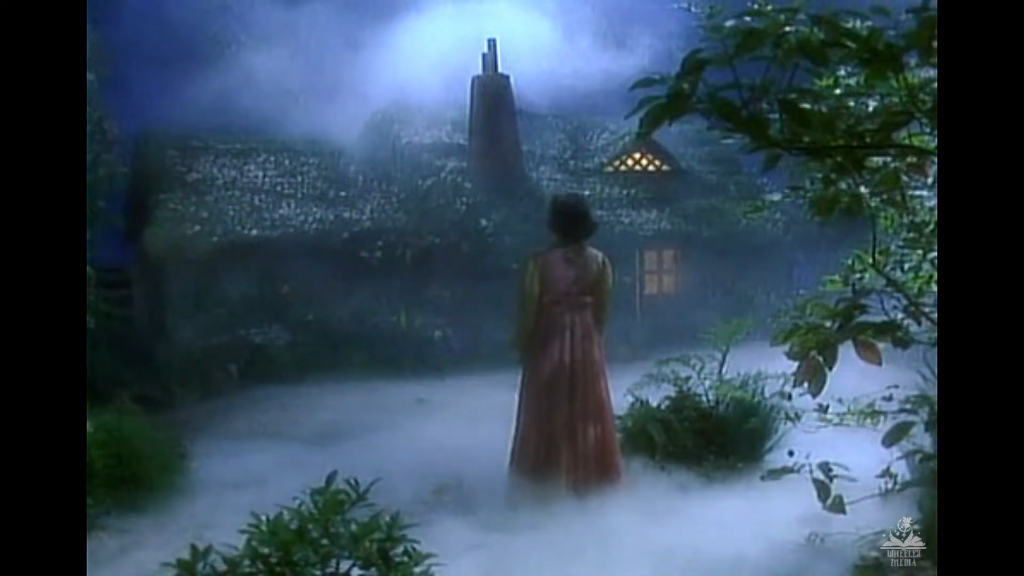
This episode’s music, courtesy of Peter Davison, is some of the loveliest ever composed for Faerie Tale Theatre. Maybe the loveliest period. It also has some of the most beautiful miniatures and, once the story reaches the forest anyway, some of the best sets. I love the forest’s mistiness. Yeah, I know it comes from a fog machine, but it still feels magical. Vanessa Redgrave and Vincent Price make for great cold hams as the evil queen and her magic mirror. The episode is arguably at its most entertaining when they’re playing off each other. Elizabeth McGovern is also pretty good as Snow White. She’s not the most charismatic lead on this show by a long shot but she’s not the most boring by one either. The script by Robert C. Jones palpably struggles to make her an interesting character. Sometimes it succeeds. The scene of her saying her prayers as the queen’s huntsman (Michael Preston) is about to kill her is quite moving, not so much because of her saintliness in asking God to forgive her murderer but because of her very human bewilderment over her situation. (“I can’t remember any sins, God, and I can’t think of any reason why I should die. It might be easier if I understood the reason, if I knew why, but I don’t.”)
What really lets this episode down, if you ask me, is the dwarfs, Bubba (Tony Cox), Barnaby (Billy Curtis), Boniface (Daniel Frishman), Bruno (Peter Risch), Baldwin (Kevin Thompson), Bertram (Lou Carry) and Bernard (Phil Fondacaro.) Their characters just aren’t that funny or endearing. I wouldn’t say they’re horribly unfunny either, but it doesn’t take long for their scenes to start dragging and they have a lot of scenes. Like some other adaptations of the fairy tale, this one introduces the prince (Rex Smith) much earlier than the Grimm brothers do. But, unlike basically all of them, it doesn’t use this to develop his romance with Snow White more. Instead, he seems to spend all his time hanging out in the woods, strumming his guitar and singing about how he wants to meet a beautiful maiden sometime. This doesn’t make for a very inspiring romantic lead. Of course, in a show like this, funny should sometimes outrank romantic but it does feel like this is meant to be one of those Faerie Tale Theatre episodes where we’re invested in the story on some level and not just laughing at it. We’re a long way from Bernadette Peters and Christopher Reeve as Sleeping Beauty and her prince. Still, it does make for an interesting subplot where the dwarfs know the prince and Snow White would love each other but refrain from introducing them because they don’t want her taken away from them, a choice they come to regret, and a really funny scene where the queen tries to flirt with the prince, forgetting she’s in her ugly old lady disguise.
Funniest Line: Prince: I cannot imagine life without you! Snow White, will you be my wife?
Snow White: Yes.
Prince: I realize you must have some time to think it over-
Snow White: Yes.
Prince: Yes?
Beauty and the Beast
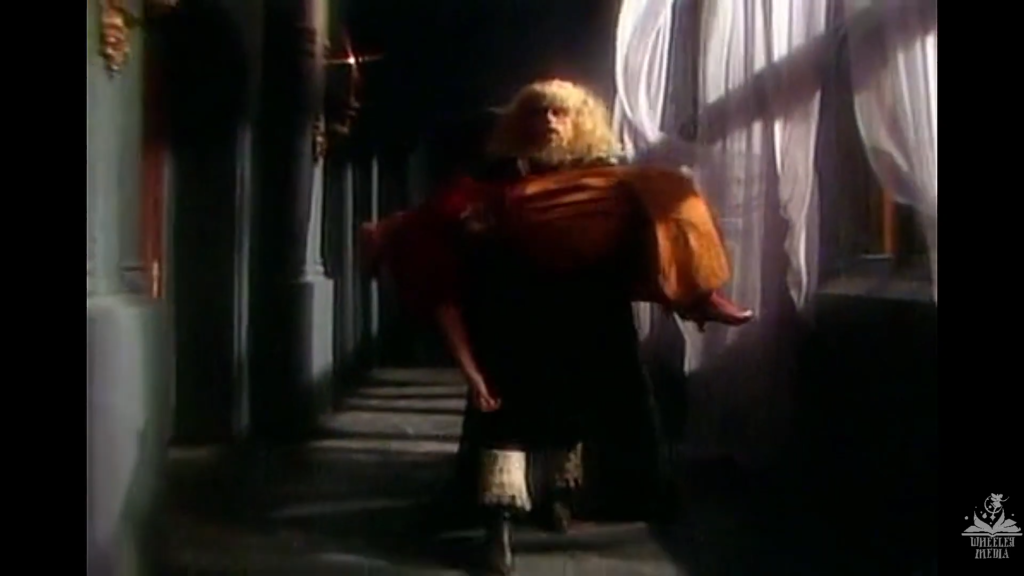
This episode is just as much based on Jean Cocteau’s 1946 movie, La Belle et la Bette, as it is on the fairy tale by Jeanne Marie Leprince de Beaumont. In fact, I’ve decided to file this post under “remakes” solely because of that. Steal from the best, I suppose. The Cocteau movie is generally regarded by critics as the greatest adaptation of this story, but this remake unfortunately brings out its storytelling problems, mainly that we’re told that the Beast (Klaus Kinski) is kind to Beauty (Susan Sarandon) much more than we’re shown it. There’s only one scene where the two actually seem to be enjoying each other’s company, a scene which was longer in the Cocteau film and had the benefit of not directly following a scene of the Beast refusing to let Beauty visit her father (Stephen Elliot). (He relents eventually of course. That’s how the story goes.) When the Beast laments that Beauty doesn’t love him but only pities him, it’s hard not to feel that that’s the appropriate response on her part. At his best, this Beast seems pitiable. At his worst, he’s just weird and creepy. As a result, this version of the legendary couple has no chemistry between them. There is a nice bit where the Beast bows his head in anguish and Beauty’s compassion makes her stroke it but that’s about it.
What makes this really frustrating is that Susan Sarandon is really bringing her A-game to the role of Beauty. She gives probably the most compelling dramatic performance ever to grace Faerie Tale Theatre and it’s a pain seeing this admirable heroine throw herself away on, well, a beast. She’s not the only good thing here. Nancy Lenehan and Anjelica Huston are entertaining as Beauty’s wicked sisters and there’s a good original twist as to why Beauty delays returning to the Beast. Notably, this twist doesn’t come from Cocteau. Watching this episode, it’s hard not to think wistfully of how Disney would not that much later create what is generally considered by critics the second greatest adaptation of Beauty and the Beast by largely ignoring the 1946 movie.[1]You could argue its villain, Gaston, was inspired by the character of Avenant from the Cocteau version but the similarities between the two might be coincidental and even if not, they’re … Continue reading Not that I’d have wanted Faerie Tale Theatre to be just like that version either. I’d prefer to see them do their own thing with this classic tale.
Parental Advisory: No sexual innuendo that I can remember but many may legitimately be creeped out by the Beast’s obsession with Beauty. There’s also a bit of profanity.
Funniest Line: For once, I can’t think of anything.
The Pied Piper of Hamelin
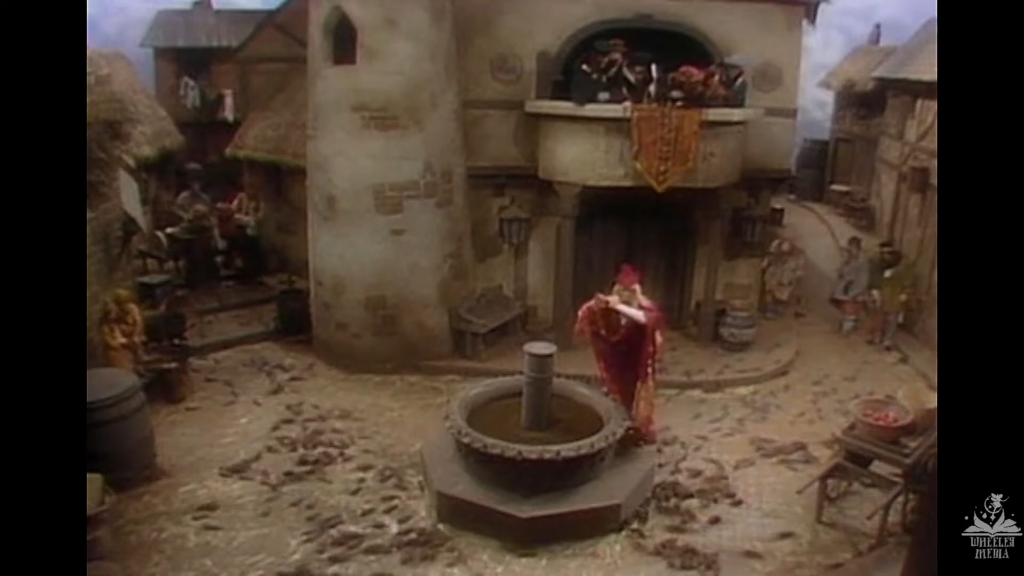
This is a rare episode to feature a framing device, one that takes it cue from the history of Robert Browning’s poem. Browning (Eric Idle who doubles as the Piper) tells it as a bedtime story to his friends’ son, Willy (Keram Malicki-Sanchez), to explain the meaning of the phrase, “pay the piper.” Not only the narration but the dialogue is all written in rhyme, using, more or less, the same meter as the original poem. This is even true of Shelley Duvall’s introduction for the episode. Apart from the rare occasional joke (“That wasn’t a promise, that was politics!”), the whole thing feels like a sincere attempt to capture the spirit of the source material. I usually admire it when Faerie Tale Theatre does that, but I admit I’m not sure if the story is strong enough for that to work. Parts of it drag and I sometimes miss the show’s typical self-conscious humor. That being said, if they had to play the adaptation this straight, they don’t do so terribly. At times, the episode is creepy, not in a funny parody-type way like The Boy Who Left Home to Find Out About the Shivers, but genuinely eerie. The opening and end credits show a house at night surrounded by woods and as the music by James Horner plays, I can’t help expecting something scary to emerge from those woods. The story’s tragic ending is also played for maximum melancholy. An episode to be admired more than enjoyed perhaps.
Funniest Line: Mayor (Tony Van Bridge): Now whose idea was that fool report? Ah, I see! No one with a prompt retort.
Alderman (Kenneth Wickes): No one wants to say, that’s true, but only because ‘twas mainly you.
The Princess Who Had Never Laughed
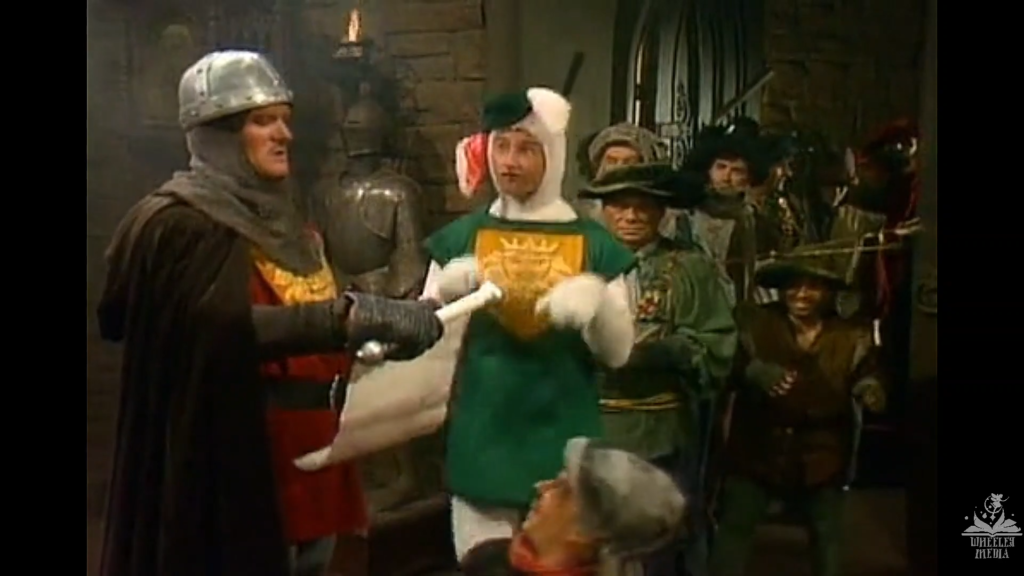
This is the only Faerie Tale Theatre episode not to be based on a specific fairy tale. The title is close to The Princess Who Never Smiled by Alexander Afanasyev, but the plot is only passingly similar. Really, this is an original variation of a recurring motif in such tales as The Golden Goose and Lazy Jack of a young woman, typically a princess, who never laughs and of a huge reward, typically her hand in marriage, offered to the man who can make her do so. It also uses the common fairy tale motif of the hero being a misfit youngest son though with a twist in that “Weinerhead Waldo” (Howie Mandell) is the youngest son of his family, having an unsupportive older brother, Lionel (Michael Tucci), but has a supportive younger sister, Gwendolyn (Sofia Coppola.) You can tell this is Faerie Tale Theatre‘s only original story, more or less, because of the emphasis on psychologically healing the relationship between the titular Princess Henrietta (Ellen Barkin) and her father, “His Seriousness” the king (Howard Hesseman.)
The episode’s beginning depicting the joyless regimen of study to which Henrietta is subjected by her stodgy old tutor (Barrie Ingham) and sour governess (Mary Woronov) is funny and the scene where she finally snaps and goes crazy, tearing up her schoolroom and demanding her father bring her someone to make her laugh, is one of the funniest in Faerie Tale Theatre. (“Those books are the world’s knowledge,” her tutor laments as she tosses her textbooks out the window. “Good,” she says, “let’s return them to the world.”) The king holds “the royal laugh-off” with Maurice LaMarche, David McCharen and Jackie Vernon as contestants. Then a funny thing happens. Or, more accurately, doesn’t happen. Much of the comedic schtick in this episode just isn’t that funny. You could argue that’s appropriate for the princess’s failed suitors, but it’s even true of Waldo. The script by David Felton deliberately has him win the contest in a way that’s more interesting than amusing[2]If you want the ending spoiled, here it is. Basically, he makes her laugh by pointing out the absurdity of her demanding someone to make her laugh when her whole household is so ridiculous. but even when his jokes are supposed to be good, they fall flat for me anyway. For a show that was all about comedic takes on fairy tales, this seems like a bizarre, wasted opportunity. Still, there’s enough good stuff in the first twenty minutes or so to make this worth a look.
Funniest Line: Henrietta: I’m having fun!
Governess: Fun? Fun?
Henrietta: Yeah, look it up; it’s in the dictionary.
Governess: I should never have given you that dictionary.
The Little Mermaid
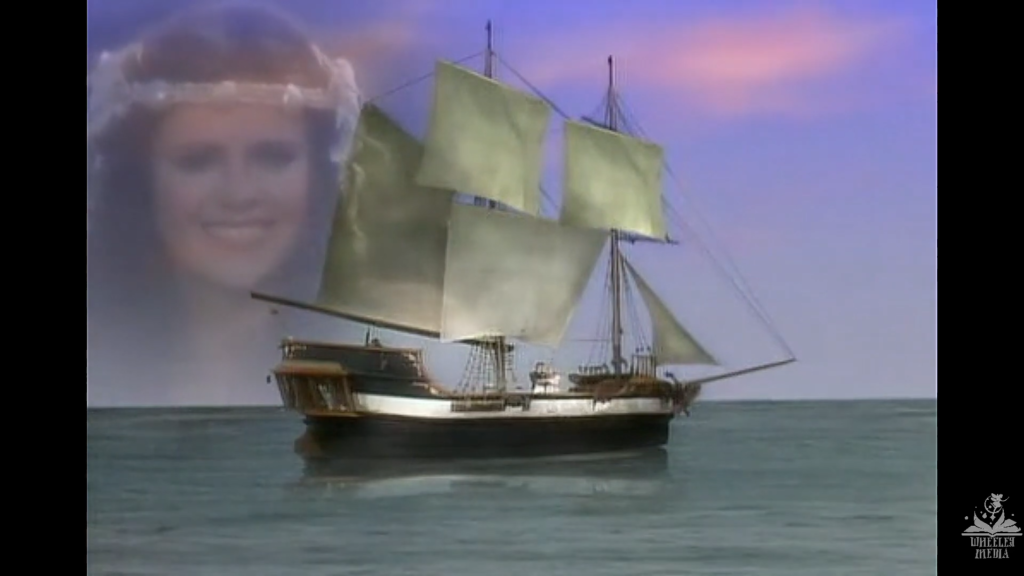
In case you didn’t know, Hans Christian Andersen’s The Little Mermaid is a dark, depressing tale about the pain of unrequited love. The Faerie Tale Theatre adaptation doesn’t lean away from any of that as some children’s adaptations do.[3]Well, except from refraining from physically cutting the mermaid’s tongue out. But it doesn’t really dive into the tearjerking drama either. Instead, it keeps, initially anyway, a light, humorous tone typical of the series though not as funny as it could be at its best. It’s a little bit hard to know what mood the episode wants us to be in to watch it. I would have preferred this to be one of the more dramatic episodes. Still, some of the sad moments are quite effective and you could argue that Andersen’s story likewise started out bright and sparkling, only becoming darker as it proceeded, so they’re not being that untrue to it.
Some of the changes made to the story don’t work that well though. The little mermaid (Pam Dawber)’s rival for the prince (Treat Williams)’s hand, here named the Princess Emilia (Helen Mirren), is a larger presence here than in the original. While she’s not a disguised villain like her Disney counterpart, she largely comes across as catty and hard to like.[4]If you’re not familiar with the original story, bail out now. I’m going to give away the ending. This also makes it hard to respect the prince’s choice of her over Pearl, as the mermaid is called, which also makes it harder to understand what she sees in him. And it’s really hard to see why we’re supposed to be happy when the narrator (Brian Dennehy who also plays the sea king) tells us in the end that the prince and princess lived long and happy lives together. In Andersen, if a mortal man marries a mermaid, she has a share in his immortal soul. While the mermaid never marries, she is rewarded for her virtue in the end by getting to become a “daughter of the air” who can earn an immortal soul for herself. Some readers find this conclusion tacked on and unsatisfying. Imagine how much worse that is in this episode where it’s never established that gaining immortality is part of Pearl’s goal and we’re only told about her becoming a “spirit of the air” in the last minute. On the plus side, the casting for this episode is quite good. Karen Black has a fun turn as the sea witch. And, as you’d hope for from an episode about mermaids, the music by Stephen Barber and the vocals, which might be Pam Dawber’s own since no singer is credited, are hauntingly beautiful.
Parental Advisory: His ship’s first mate (Geoff Hoyle) teases the prince that he has to go back to the palace and be bored by “sitting in the lap of luxury while gorgeous naked women pop pealed grapes into your mouth.” This is the only really vulgar part of the episode but it’s pretty extreme.
Worst Special Effect: Anything with the mermaids swimming under water is laughably bad, especially the effects for their hair.
Funniest Line: Prince: Don’t tell me an old sea dog like you is afraid of the water?
First Mate: Oh, no, water’s all very well in its place. A little hot water in a teapot for instance.
Special Bonus Episode!
I’d like to end this series about Faerie Tale Theatre on a more positive note, so I’m going to cheat by writing about an episode that is actually one of my favorites though I’m sure that’s not a popular opinion. This is or used to be a lost episode, but it was rediscovered and put on the most recent DVD set as a special feature. You see…it’s a clip show. I know, I know. People hate clip shows and usually I do too. But I think this one has a really fun premise and a good selection of clips.[5]Phineas and Ferb also had the rare gift of creating fun clip shows. It begins with Shelley Duvall getting dressed for a costume party celebrating three years of Faerie Tale Theatre. This was evidently a real thing as we get real footage from it and brief interviews with the actors mixed in with the scripted stuff. But before Duvall can leave, she gets knocked out and imagines she’s put on trial by the brothers Grimm (Richard Libertini and Ed Beagley Jr.) for tampering with classic literature and retelling fairy tales with a medium for which they were never intended. Duvall defends her use of artistic license by showing clips from the show. First, she quickly recaps three episodes, The Tale of the Frog Prince, Pinocchio and Cinderella, to show she’s stayed to true to the original tales. Ironically, Cinderella is the only one of those three to be particular close to the source material[6]Like most adaptations of Pinocchio, the Faerie Tale Theatre episode owes more to the 1940 Disney movie as it does to Carlo Collodi’s book. Actually, it combines elements of the two even when … Continue reading and Duvall wrongly attributes it to Grimm rather than Charles Perrault. (The brothers Grimm did do a version of Cinderella but the Faerie Tale Theatre one is obviously based on Perrault’s. It’s confusing, I know.) We then proceed to the shows’ funniest moments, scariest moments, most magical moments and most romantic moments. Many of these would really be considered Faerie Tale Theatre‘s cheesiest moments but that’s part of the fun of this episode and this show in general. In my opinion, this clip show works as both a fun lookback for fans and a good sampler for newcomers to see whether or not it’s for them. I’d also say it underlines the real appreciation and affection Faerie Tale Theatre has for fairy tales while still taking a creative approach to them. For all that the show hangs lampshades on the ridiculous aspects of them (cf. my choice for the funniest line from Snow White and the Seven Dwarfs), it’s not a deconstruction along the lines of Sondheim’s Into the Woods or even something like Dreamworks’s Shrek. It pokes fun at these stories the way you poke fun at something you really like and that’s part of why fans like it in turn.
References
| ↑1 | You could argue its villain, Gaston, was inspired by the character of Avenant from the Cocteau version but the similarities between the two might be coincidental and even if not, they’re handled differently. |
|---|---|
| ↑2 | If you want the ending spoiled, here it is. Basically, he makes her laugh by pointing out the absurdity of her demanding someone to make her laugh when her whole household is so ridiculous. |
| ↑3 | Well, except from refraining from physically cutting the mermaid’s tongue out. |
| ↑4 | If you’re not familiar with the original story, bail out now. I’m going to give away the ending. |
| ↑5 | Phineas and Ferb also had the rare gift of creating fun clip shows. |
| ↑6 | Like most adaptations of Pinocchio, the Faerie Tale Theatre episode owes more to the 1940 Disney movie as it does to Carlo Collodi’s book. Actually, it combines elements of the two even when they’re not compatible since in Collodi, all marionettes seem to be alive somehow and in Disney, only Pinocchio is granted that gift. |
